- Essay Topic Generator
- Essay Grader
- Reference Finder
- AI Outline Generator
- Paragraph Expander
- Essay Expander
- Literature Review Generator
- Thesis Generator
- Text Editing Tools
- AI Rewording Tool
- AI Sentence Rewriter
- AI Article Spinner
- AI Grammar Checker
- Spell Checker
- PDF Spell Check
- Paragraph Checker
- Free AI Essay Writer
- Paraphraser
- Grammar Checker
- Citation Generator
- Plagiarism Checker
- AI Detector
- AI Essay Checker
- Proofreading Service
- Editing Service
- AI Writing Guides
- AI Detection Guides
- Citation Guides
- Grammar Guides
- Paraphrasing Guides
- Plagiarism Guides
- Summary Writing Guides
- STEM Guides
- Humanities Guides
- Language Learning Guides
- Coding Guides
- Top Lists and Recommendations
- AI Detectors
- AI Writing Services
- Coding Homework Help
- Citation Generators
- Editing Websites
- Essay Writing Websites
- Language Learning Websites
- Math Solvers
- Paraphrasers
- Plagiarism Checkers
- Reference Finders
- Spell Checkers
- Summarizers
- Tutoring Websites
- Essay Checkers
- Essay Topic Finders

Most Popular
Tips for college freshmen: from social life to studying.
12 days ago
How to Write a Song Title in an Essay
Demure tiktok trend explained: what it is and why it’s going viral, college dorm checklist must-have things to take with you, wonder summary, why is paraphrasing important.
Image: unsplash.com

Paraphrasing is a fundamental skill sitting at the crossroads of comprehension, expression, and academic integrity. In academic environment, paraphrasing holds significance due to a number of reasons. It’s an excellent mental workout that pushes the boundaries of your understanding and critical thinking. By rewording, you learn to articulate complex ideas in your own words, an invaluable skill for everyone in all fields. Moreover, paraphrasing plays a key role in maintaining academic integrity, allowing students to incorporate and acknowledge others’ ideas within their work. Continue reading to learn everything about the importance of paraphrasing.
Paraphrasing and Skill Development
When done effectively, paraphrasing has several benefits that simple rewording can’t produce. It is a comprehensive ability that greatly contributes to academic and intellectual development. Let’s look at some of the important advantages:
| 🧠 Enhances Comprehension | 🔍 Fosters Critical Thinking |
| Paraphrasing requires an understanding of the source text. To get the whole meaning, you must engage with the material rather than simply skim the surface. This need guarantees that you are not only reading but also comprehending the text. As you try to express these thoughts freshly, your understanding of the subject grows. This better understanding is an important stage in learning, and paraphrasing is an essential instrument for students. | Paraphrasing is an active interaction with a text. It asks you to distinguish between the vital core concepts and the non-essential details. This judgment is the essence of critical thinking: determining what is essential vs what is optional. Paraphrasing helps you acquire the capacity to evaluate and prioritize information, which is useful in education or professional life. |
| ✍️ Improves Writing and Research Skills | 🎓 Encourages Academic Integrity |
| One of the most obvious benefits of paraphrasing is that it improves your writing and research skills. When you process knowledge from multiple sources and communicate it again, you’re creating a cohesive story that represents your understanding and viewpoint. This exercise improves your ability to articulate difficult thoughts clearly, which strengthens your writing abilities. Furthermore, the research process improves as you learn to recognize and integrate essential themes from your sources. | Paraphrasing protects intellectual property while additionally contributing to the scholarly discussion. It promotes an honest and respectful academic atmosphere by attributing original authors and preventing plagiarism. This ethical element is critical because it supports the trust and credibility that are fundamental to academic activity. |
Don’t Believe? Try our Free Paraphraser to get an Example
Paraphrasing and its impact on academic papers.
Paraphrasing is a part of academic writing. It links current information and fresh discoveries, enabling authors to include authoritative sources into their writings as a careful integration that adds depth and uniqueness. When done well, paraphrasing indicates the author’s understanding of the original material, demonstrating that they not only can grasp complicated topics but also explain them in a new way. This helps to build a stronger, more compelling argument by anchoring theoretical ideas in proven research and avoiding the problems of plagiarism.
Moreover, effective paraphrasing improves the academic paper by introducing diversity in expression and preventing monotony, keeping readers engaged. It allows the writer to maintain a consistent voice throughout the document, creating the paper as a cohesive story rather than a patchwork of disconnected quotations. This coherence is critical for the reader’s understanding and for conveying the author’s perspective on the topic.
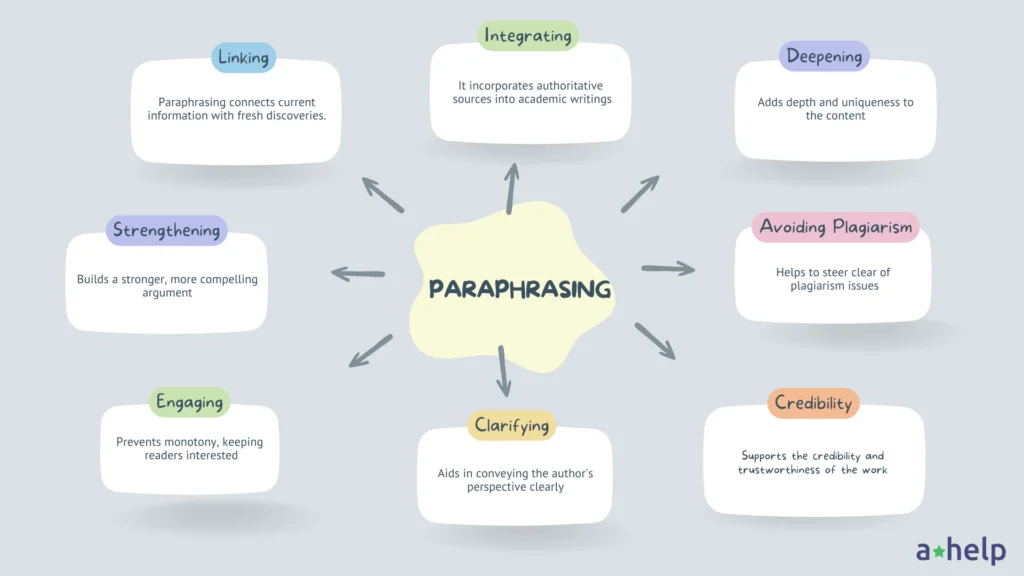
Equally important is the ethical aspect of paraphrasing. Properly rephrased and cited, it maintains the integrity of academic work, distinguishing it from plagiarism and unauthorized use of intellectual property. This ethical practice supports the credibility and trustworthiness of the paper itself.
To sum up, paraphrasing significantly impacts academic papers by promoting understanding, originality, and ethical standards. It demonstrates the author’s capacity to participate in and contribute to academic dialogue, making it a valuable skill in the scholarly community. However, paraphrasing may seem quite daunting, so it would be smart to consider using an AI rewording tool to boost the process.
What distinguishes effective paraphrasing from simple rewording?
Effective paraphrasing involves a deep understanding of the original material, allowing the paraphraser to convey the same ideas in a completely new way that reflects their voice and style. True paraphrasing demonstrates comprehension and the ability to critically engage with the text, thereby adding value to the academic discourse. In contrast, simple rewording often results in a piece that is too close to the source, lacking originality and failing to fully grasp the underlying concepts.
Can paraphrasing tools ensure academic integrity?
While paraphrasing tools can aid in rephrasing text, they do not guarantee academic integrity on their own. These tools may provide a starting point for rewriting content, but they often lack the nuance and understanding required for true paraphrasing. Academic integrity involves correctly interpreting and crediting the source material, a process that requires human judgment and ethical consideration. Thus, while paraphrasing tools can be helpful, they should be used cautiously, with the final work carefully reviewed and adjusted to ensure it meets academic standards.
How does paraphrasing contribute to the development of academic writing style?
Paraphrasing contributes to the development of academic writing style by enhancing clarity, precision, and personal voice. It encourages deeper engagement with source material, leading to better critical thinking and analytical skills. Through paraphrasing, writers expand their vocabulary and learn to express complex ideas in their own manner, making their arguments more cohesive.
Follow us on Reddit for more insights and updates.
Comments (0)
Welcome to A*Help comments!
We’re all about debate and discussion at A*Help.
We value the diverse opinions of users, so you may find points of view that you don’t agree with. And that’s cool. However, there are certain things we’re not OK with: attempts to manipulate our data in any way, for example, or the posting of discriminative, offensive, hateful, or disparaging material.
Cancel reply
Your email address will not be published. Required fields are marked *
Save my name, email, and website in this browser for the next time I comment.
More from Paraphrasing Guides
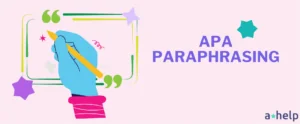
APA Paraphrasing
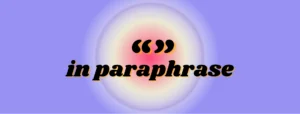
Do Paraphrases Need Quotation Marks

How to Rewrite the Sentence in Active Voice
Remember Me
What is your profession ? Student Teacher Writer Other
Forgotten Password?
Username or Email
Get access to 120+ AI writing tools to elevate your writing experience.
General Writing
- Paragraph Generator
- Article Rewriter
- Paraphrasing Tool
- Essay Writer
- AI Text Generator
- Sentence Expander
- Paragraph Rewriter
- Sentence Generator
- Plagiarism Remover
Assistant Writing
- Grammar Checker
- Online Proofreader
- Text & PDF Summarizer
- Spell Checker
- AI Translator
- Plagiarism Checker
- Punctuation Checker
Creative Writing
- Prompt Generator
- AI Response Generator
- Hashtag Generator
- Slogan Generator
- Tweet (Thread) Generator
- Instagram Caption Generator
- Script Generator
- AI Lyrics Generator
- AI Story Generator
Take advantage of HIX.AI's full capabilities anywhere on the web.
Productivity
Type // to enjoy our AI assistance as you write on Google Docs.
Type // craft compelling emails and personalized replies.
Explore a more powerful Bing sidebar alternative for Chrome.
Find HIX.AI's comprehensive responses among typical search results.
Select any text online to translate, rewrite, summarize, etc.
Social Media
Type // to compose concise yet powerful Twitter posts that trend.
Type // to create engaging captions for your Instagram posts.
Type // to draft interactive Facebook posts that engage your community.
Type // to provide valuable, upvoted answers on Quora.
Type // to craft Reddit posts that resonate with specific communities.
Summarize long YouTube videos with one click.

Explore the most powerful, all-in-one ChatGPT copilot for the web.
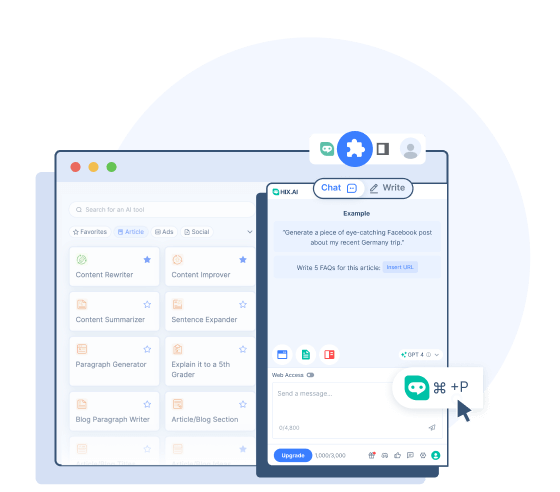
Table of Content
The Definition of Paraphrase
Why do you need to paraphrase, paraphrasing, quoting, summarizing: what’s the difference, how to paraphrase, benefits of paraphrasing, example of a paraphrase, how to cite paraphrased text, what is paraphrasing.

We are surrounded by text wherever we go, whether online, in books, text messages, emails, or stores. The text can be anything from stories to opinions, and everything in between. But what happens when you find a text you really like and want to share, but you don’t want to write it exactly as it was said? Enter paraphrasing.
Paraphrasing is a nifty alternative to using quotes, where you copy the exact words and place them in quotation marks. It allows you to rephrase the text in a way that reads more clearly and smoothly while allowing your personal voice to sing through.
But what exactly is paraphrasing and how is it different from quoting or summarizing? Below, we’ll break it all down and include some examples to demonstrate. We’ll also look at the benefits of using a paraphrasing tool when writing. Let’s get into it.
According to the Cambridge Online Dictionary, the definition of paraphrase is to write or say something using different words while maintaining the meaning. Paraphrasing is normally used to make sentences simpler, shorter, or clearer.
When you restate someone else’s ideas, opinions, or thoughts in your own words, you need to cite the source. Even though you’ve paraphrased their words, you’re still using their concepts.
There are various reasons why you’d want or need to paraphrase text. Below are a few of the most common reasons:
- Avoids plagiarism
- Adds credibility and support for claims
- Helps use source material as evidence that’s easy to read while appropriately referencing
- Demonstrates a thorough understanding of the original text
- Offers an alternative to quoting (directly and indirectly)
- Allow you to maintain your voice throughout the text
There are a few distinct differences between paraphrasing, quoting, and summarizing. Below, we’ll explore them in-depth.
Paraphrasing vs Quoting
As you know, paraphrasing is taking someone’s words, understanding the meaning, and rewriting the content in your own words. Quoting, on the other hand, is taking someone’s words exactly as they were said or written and placing them in inverted commas to show you are stating what someone said directly, word for word.
In most cases, it’s better to paraphrase than quote because:
- You can maintain your own voice throughout your article, blog, or paper
- Paraphrasing demonstrates your understanding of the original text
- Quotes cause interruptions in fluidity and reduce readability
That said, there are some cases where quoting is the better option, such as:
- When you want an exact definition
- You’re providing evidence to support an argument
- The author’s style or language is useful to your point
- When analyzing or critiquing a claim
Paraphrasing vs Summarizing
As we mentioned, when you paraphrase text, you’re writing the text in your own words. The text will normally be the same length or slightly shorter than the original.
When you take text that is fairly lengthy and reduce it to just the key points so the end result is considerably shorter, it is called summarizing.
Quoting and paraphrasing are used as tools to present information from specific sources. If the information you’re including is more general, such as using one or two points to demonstrate the overarching argument in an article, it’s called summarizing.
Now that you understand how paraphrasing differs from quoting and summarizing, let’s look at how you can paraphrase text.
- Start by reading the text several times. This is to ensure you thoroughly understand the context of the statement and its meaning.
- Write your own version of what you read without looking at the original text.
- Look at your text and the original text side-by-side. If the two are too similar, make changes to your text while maintaining the meaning.
- Check your spelling (especially names), grammar, and punctuation.
- Cite the source of the original text at the end of your paraphrased text.
Quick tips for paraphrasing
- Begin at a different point than the original text.
- Synonyms are your best friend - use them as much as possible when it makes sense.
- Change the sentence structure - switch up active and passive voice, for example.
- Break up longer sentences into shorter ones, or vice versa.
Paraphrasing with AI
If you still have trouble paraphrasing on your own, opt for paraphrasing tools online.
Utilize the Paraphrasing Tool with HIX.AI
When it comes to paraphrasing text efficiently, you can always count on HIX.AI's paraphrasing tool . Whether you need to paraphrase a sentence , a paragraph , or even an entire article , this tool has the answers.
Powered by GPT-3.5 and GPT-4 , this paraphrasing tool does more than just simple word substitutions. Instead, it understands the context and essence of the original text and generates paraphrases with the same meaning but different expressions in a human-like way.
It also offers several customization options to tailor the output according to your specific needs. You can adjust the level of creativity, select your target audience and tone of voice, and choose different languages for paraphrasing.
In short, it's a convenient and reliable paraphrasing tool that's worth a try.

Discover Other AI Paraphrasing Tools Online
Besides HIX.AI, there are numerous AI platforms that offer paraphrasing services. For example, QuillBot and Wordtune.
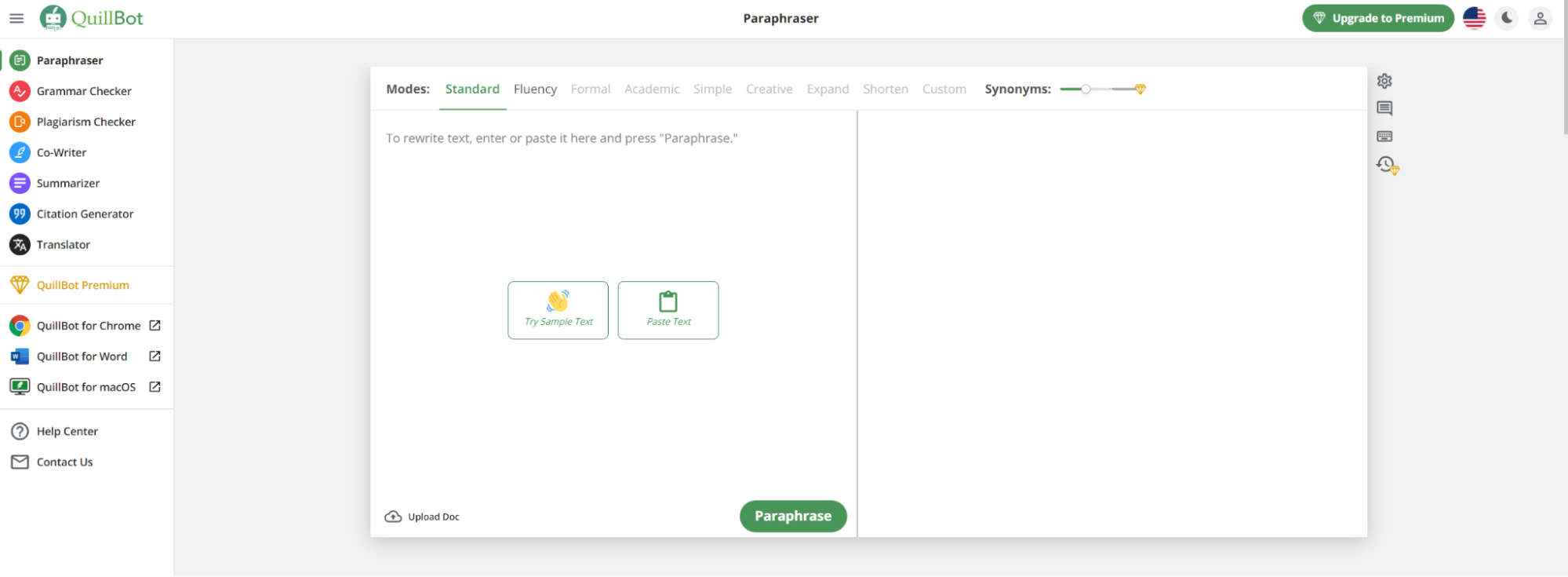
QuillBot is an advanced paraphrasing tool that uses AI to rephrase and restructure sentences, paragraphs, or articles.
It offers various modes such as Standard, Fluency, Creative, and Concise to cater to different writing styles and purposes. QuillBot will also provide multiple alternative rephrased versions, allowing users to choose the one that best fits their needs.
Furthermore, QuillBot offers a browser extension, integrated with platforms like Google Docs to enhance user experience.
Click on to learn more about QuillBot and its alternatives.

Wordtune serves as an AI writing assistant and paraphrasing tool designed to help users improve the quality and clarity of their writing. It provides suggestions for rephrasing sentences, offering alternative word choices, and improving overall readability.
Like HIX.AI and QuillBot, it offers an extension that integrates with platforms like Google Docs to assist users in various writing contexts.
Explore more about Wordtune and its alternatives by clicking here.

HIX Bypass is a powerful paraphraser that utilizes sophisticated AI humanization techniques to rewrite AI text and make it human-like enough to bypass any AI detector. Unlike most rewriting tools, it goes beyond simple word replacement by intelligently altering aspects of the text such as the vocabulary, syntax, and tone.
Since it works with any AI language model out there such as ChatGPT, Bard, GPT-4, and Jasper, it can be relied on to deliver a perfect human score. This means consistently bypassing extremely stringent AI detectors like Originality.ai and GPTZero , just to name a few.
In addition, any rewritten content will not only be unique and plagiarism-free but also contextually accurate to the original text. Another added benefit is that HIX Bypass has multilingual support, which lets you rewrite content in over 50+ native languages.
Rewrite Your Text With HIX Bypass To Bypass AI Detection >>>
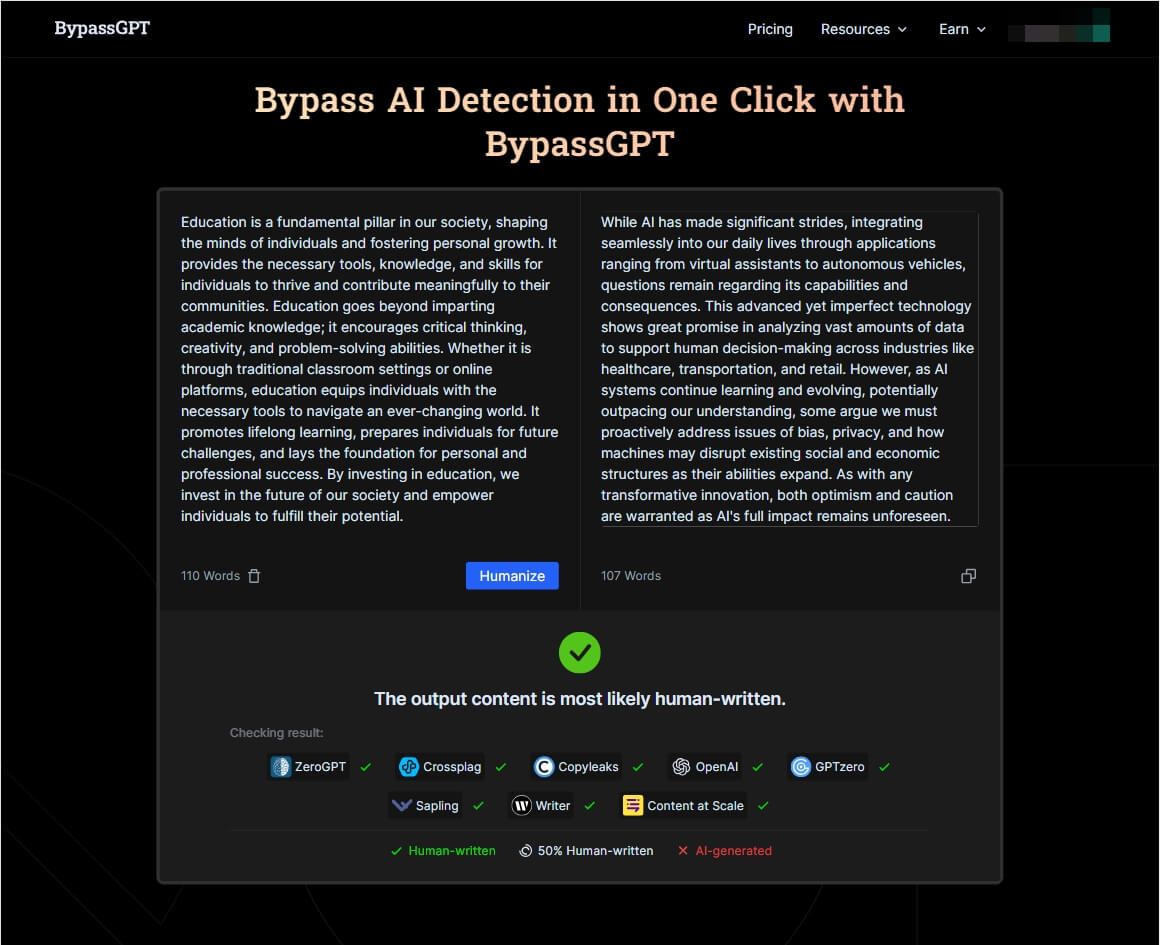
If you want to evade AI detectors like GPTZero and Originality.ai, BypassGPT is another reliable rewriter that can help you humanize any AI text in seconds. It is trained to mimic natural human writing styles effectively, making any AI text sound more authentic while retaining the original meaning.
Whether the content was generated using Bard, ChatGPT, GPT-4, or even Jasper, the output will be entirely plagiarism-free and deliver a 100% human result.
BypassGPT also has three different humanization modes and it even caters to SEO optimization, as you can include keywords to ensure the content ranks highly in SERPs. Plus, the rewritten text is made to sound so human that it can evade spam filters every time.
Paraphrase AI Content Using BypassGPT To Make It Sound Human >>>
There are a few solid benefits to be gained for your learning abilities and writing skills by paraphrasing. These include:
Improved Writing Skills
When you paraphrase text, you need to write paragraphs and passages of text in your own words based on your understanding. This helps you bolster your writing skills, especially when you need to come up with creative synonyms while maintaining the meaning.
Paraphrasing lets you express information or ideas in a short, simple, refreshing way, giving you the opportunity to remove plagiarism while enhancing your writing skills. What better way to build your skills than to express ideas in your own authentic voice.
Increased Comprehension
Put simply, comprehension is the understanding of what has been written and the ability to explain it. As we’ve mentioned, paraphrasing allows you to demonstrate your understanding of the details and concepts in the original text by connecting the points and explaining the meaning.
Paraphrasing is also fantastic to reinforce your reading skills. It assists you by finding supporting details, identifying main concepts, and establishing the author’s voice and keeping true to it. When you rewrite the text in your own words, you need to double-check your comprehension by seeing if the meaning has transferred. This improves your awareness while allowing you to get a better understanding of the text.
Save Energy and Time
Writing content from a blank slate can be challenging and requires a lot of energy and time. You need to do in-depth research, fact-checking, and analysis, which is energy and time-consuming.
A simple solution to this rather painstaking process is to paraphrase the sentence or paragraph that backs up your argument. This allows you to create content without the muss and fuss of research and ideation. It’s a win-win.
Let’s look at an example of paraphrasing text correctly.
Original : “It makes such a difference when there is reciprocity, mutual respect, and a whole lot of love and laughter. When you have experienced genuine love, appreciation, and interest on a weekly basis from someone who calls you a friend, they have set the bar pretty high for anyone else who wants to be called a friend” (Johns, 2023)
Paraphrased : It is truly remarkable how reciprocity, mutual respect, and an abundance of love and laughter can truly transform relationships. When you have had the privilege of experiencing authentic love, appreciation, and sincere interest from someone who considers you a friend on a regular basis, they have established a remarkably high standard for those seeking the title of a true friend (Johns, 2023).
You can easily see that the sentences have been moved around, many synonyms have been used, sentence structure has changed, and personality has been included.
Ensure the following:
- Only include information that’s relevant to the point you’re trying to make.
- If the text is scientific, start the paraphrase with the signal text, “Doctors/scientists/researchers say/believe/found that…”
- Retain keywords or phrases that reinforce the meaning.
- Always structure the sentences differently from the original. Write the text based on your understanding and in a way you would say it.
- Present the information in a different order.
How you cite paraphrased text will be determined by the citation format required (i.e., MLA, APA, Chicago, etc.). In-text citations will normally be MLA or APA and look like this:
MLA : (Johns 187)
APA : (Johns, 2023, p187)
For Chicago footnotes, you will use this format:
Austin Johns, “Understanding boundaries within friendships and relationships,” Journal of Psychology and Sociology 42, no. 16 (2023): 187. https://journalofpsychology.com
So, what does paraphrasing mean in the grand scheme of things? It means that you can use text that others have written while maintaining your style and voice. Quotes can create stilting in your text while summarizing is only appropriate in certain circumstances.
Using a paraphrasing tool is a quick and simple way to ensure you’re paraphrasing correctly while maintaining the meaning and integrity of the original text. Let’s be honest: no one wants to be sourced for a statement that someone else has incorrectly paraphrased. Always ensure the text you’ve created is true to the original.
Related Posts
Does chatgpt plagiarize.
Does ChatGPT plagiarize? We’ll discuss all the relevant information and answer the common question; is ChatGPT plagiarism?
10 Best DeepL Alternatives
This is the perfect guide for you if you have been searching for the best DeepL alternative on the market. These alternatives score well in areas DeepL does not.
- Copy.ai Review: Honest Review of Its Pricing, Features and Usability
Is Copy.ai an AI writer you can rely on? Discover the answer in this comprehensive review of Copy.ai, which examines all of its major features.
Related Articles
- How to Write a News Report?
- Jasper Review: Pricing, Features & User Experience
- How to Write a Professional Technical Manual?
- How to Write an Outline for Your Article?
- How to Write Well-structured Lists?
- How to Write Paragraphs?
- How to Write Reports?
- How to Write SEO-Friendly Content?
- How to Write a Presentation Speech?

- TEFL Internship
- TEFL Masters
- Find a TEFL Course
- Special Offers
- Course Providers
- Teach English Abroad
- Find a TEFL Job
- About DoTEFL
- Our Mission
- How DoTEFL Works
Forgotten Password

- What is Paraphrasing? An Overview With Examples
- Learn English
- James Prior
- No Comments
- Updated February 23, 2024
What is paraphrasing? Or should I say what is the definition of paraphrasing? If you want to restate something using different words whilst retaining the same meaning, this is paraphrasing.
In this article, we cover what paraphrasing is, why it’s important, and when you should do it. Plus, some benefits and examples.

Table of Contents
Paraphrase Definition: What is Paraphrasing?
Paraphrasing is when you restate the information from a source using your own words while maintaining the original meaning. It involves expressing the ideas in a different way, often to clarify or simplify the content, without directly quoting the source.
When you paraphrase, you are not only borrowing, clarifying, or expanding on the information but also ensuring that you do all of these actions without plagiarizing the original content. It’s therefore definitely worth learning how to paraphrase if you want to improve your writing skills.
Why is Paraphrasing Important?
Paraphrasing is a valuable skill that allows you to convey information in your unique writing style while still giving credit to someone else’s ideas. It’s important for several reasons, and it serves various functions in both academic and professional writing.
Here are some key reasons why you should paraphrase:
- Paraphrasing allows you to present information from sources in your own words, reducing the risk of plagiarism. Proper in-text citation is still necessary, but paraphrasing demonstrates your understanding and interpretation of the material.
- When you paraphrase, you are required to comprehend the original content fully. You actively engage with the information, helping you better understand complex concepts and ideas. This process of restating the information in your own words showcases your understanding of the subject matter.
- By paraphrasing, you can clarify complex ideas or technical language and convey information in a clearer, shorter, and simpler form. This makes it more accessible to your audience and ensures they grasp the key points. This is particularly important when communicating with readers who may not be familiar with specialized terminology.
- Paraphrasing is valuable when synthesizing information from various sources. It enables you to blend ideas cohesively while maintaining a consistent writing style throughout your work.
- Paraphrasing allows you to inject your unique writing style and voice into the content. It helps you present information in a way that is more aligned with your personal expression and perspective.
- In certain situations where you need to meet specific length requirements for assignments or publications, paraphrasing allows you to convey information more concisely while still preserving the essential meaning.
- Paraphrasing helps maintain a smooth flow and cohesiveness in your writing. It allows you to integrate information seamlessly, avoiding abrupt shifts between your own ideas and those from external sources.
- Depending on your audience, you may need to adapt the language and level of technicality of the information you present. Paraphrasing allows you to tailor the content to suit the needs of your specific readership.
Incorporating paraphrasing into your writing not only showcases your understanding of the material but also enhances the overall quality and originality of your work.
When Should You Paraphrase?
Knowing when to paraphrase is an important skill, especially in academic writing and professional communication. Here are some situations in which you should consider paraphrasing:
- To Avoid Plagiarism: Whenever you want to incorporate information from source material into your own work, but don’t want to use a direct quotation, paraphrasing is necessary to present the ideas in your own words while still acknowledging the original source.
- To Express Understanding: Paraphrasing demonstrates your understanding of a topic by rephrasing the information in a way that shows you have processed and comprehended the material.
- To Simplify Complex Information: If you encounter complex or technical language that may be difficult for your audience to understand, paraphrasing can help you clarify and simplify the information to make it more accessible and digestible.
- To Integrate Multiple Sources: When synthesizing information from multiple sources, paraphrasing allows you to blend the ideas cohesively while maintaining your own voice and perspective.
- To Maintain Consistency in Writing Style: In academic writing or professional writing, paraphrasing can help you maintain a consistent writing style throughout your work. This helps to ensure that all sections flow smoothly and are coherent.
- To Meet Specific Requirements: Some assignments or publications may have specific requirements. This could relate to the number of words or concern the use of direct quotations. In such cases, paraphrasing allows you to meet these requirements while still incorporating relevant information from your sources.
What Are the Benefits of Paraphrasing?
Rewriting information in a clearer, shorter, and simpler form is called paraphrasing, so one of the benefits of paraphrasing is already clear! However, it can also be a useful exercise for other reasons, which are outlined below:
Avoiding Plagiarism
One of the main benefits of paraphrasing is mastering the ability to present information from external sources in a way that is entirely your own. By restructuring the content and expressing it using your words, you create a distinct piece of writing that reflects your comprehension and interpretation of the original material. This not only showcases your academic or professional integrity but also safeguards against unintentional plagiarism.
Paraphrasing is a fundamental skill in academic and professional settings, where originality and proper attribution are highly valued. This is especially true when it comes to writing research papers, where you’ll often need to reference someone else’s ideas with appropriate citations.
When you paraphrase effectively, you communicate to your audience that you respect the intellectual property of others while contributing your unique insights. This ethical approach to information usage enhances your credibility as a writer or researcher and reinforces the integrity of your work.
Enhancing Understanding
When you engage in paraphrasing, you actively participate in the material you are working with. You are forced to consider the ideas presented in the source material. You need to discern the essential concepts, identify key phrases, and decide how best to convey the message in a way that resonates with you.
This active engagement not only aids in understanding the content but also encourages critical thinking as you evaluate and interpret the information from your own standpoint.
By expressing someone else’s ideas in your own words, you deepen your understanding of the content. This process requires you to dissect the original text, grasp its nuances, and then reconstruct it using your language and perspective. In this way, you go beyond mere memorization and truly internalize the information, fostering a more profound comprehension of the subject matter.
Tailoring Information for Your Audience
Paraphrasing empowers you to adapt the language and complexity of the information to suit the needs and understanding of your audience. As you rephrase the content, you have the flexibility to adjust the level of technicality, simplify complex terminology, or tailor the tone to make the information more accessible to your specific readership.
Consider your audience’s background, knowledge level, and interests. Paraphrasing allows you to bridge the gap between the original content and the understanding of your intended audience.
Whether you are communicating with experts in a particular field or a general audience, the ability to paraphrase ensures that the information is conveyed in a way that resonates with and is comprehensible to your readers. This skill not only facilitates effective communication but also demonstrates your awareness of the diverse needs of your audience.
Improves Writing Skills
Paraphrasing helps in the development and refinement of your writing skills. When you actively engage in the process of rephrasing someone else’s ideas, you hone your ability to express concepts in a clear, concise, and coherent manner.
This practice refines your language proficiency, encouraging you to explore different types of sentence structure, experiment with vocabulary, and ultimately develop a more sophisticated and nuanced writing style.
As you paraphrase, you gain a heightened awareness of grammar, syntax, and word choice. This translates into improved writing, helping you construct well-articulated sentences and paragraphs. Moreover, paraphrasing allows you to experiment with different writing tones and adapt your style to suit the context or purpose of your writing, fostering versatility and adaptability in your expression.
Saves Time and Energy
Paraphrasing can significantly reduce the time and energy spent on the writing process. Rather than grappling with the challenge of integrating lengthy direct quotations or struggling to find the perfect synonym, paraphrasing allows you to distill and convey information in a more streamlined way.
This becomes particularly advantageous when faced with strict deadlines. By mastering paraphrasing, you empower yourself to produce well-crafted, original content in a shorter timeframe, allowing you to meet deadlines without compromising the quality of your work.
Examples of Paraphrasing
Here are some examples of paraphrasing:
- Original: “The advancements in technology have revolutionized the way we communicate with each other.”
- Paraphrased: “Technological progress has transformed how we interact and communicate with one another.”
- Original: “Deforestation poses a significant threat to global ecosystems and biodiversity.”
- Paraphrased: “The impact of deforestation represents a substantial danger to ecosystems and the diversity of life on a global scale.”
- Original: “Effective time management is essential for achieving productivity in both professional and personal spheres.”
- Paraphrased: “Efficient management of time is crucial for attaining productivity in both professional and personal aspects of life.”
- Original: “The restaurant offers a diverse selection of culinary choices, ranging from traditional dishes to modern fusion cuisine.”
- Paraphrased: “The restaurant provides a variety of food options, including both traditional and modern fusion dishes.”
- Original: “The novel explores the complexities of human relationships in a rapidly changing society.”
- Paraphrased: “The book delves into the challenges of human connections in a fast-changing world.”
- Original: “Regular exercise is crucial for maintaining optimal physical health and preventing various health issues.”
- Paraphrased: “Exercising regularly is important for keeping your body healthy and avoiding health problems.”
In these examples, you can observe the use of different wording, sentence structure, and synonyms while preserving the core meaning of the original sentences. This is the essence of paraphrasing.
What Are the Differences Between Paraphrasing, Quoting, and Summarizing?
So, we’ve established that successful paraphrasing is a way of rewriting someone else’s words whilst retaining their meaning and still giving credit to the original author’s ideas. But how is this different from quoting and summarizing?
While paraphrasing, quoting, and summarizing are all ways of incorporating information from source material into your own writing, there are key differences between them:
Paraphrasing
- Definition: Paraphrasing involves rephrasing someone else’s ideas or information in your own words while retaining the original meaning.
- Usage: You use paraphrasing when you want to present the information in a way that suits your writing style or when you need to clarify complex ideas.
- Example: Original: “The study found a significant correlation between sleep deprivation and decreased cognitive performance.” Paraphrased: “The research indicated a notable link between lack of sleep and a decline in cognitive function.”
- Definition: Quoting involves directly using the exact words from a source and enclosing them in quotation marks.
- Usage: You use quoting when the original wording is essential, either because of its precision or uniqueness, or when you want to highlight a specific phrase or concept.
- Example: Original: “The author argues, ‘In the absence of clear guidelines, individual judgment becomes paramount in decision-making.'”
The use of quotation marks is vital when quoting.
Summarizing
- Definition: Summarizing involves condensing the main ideas of a source or original passage in your own words, focusing on the most crucial points.
- Usage: You use summarizing when you need to provide a concise overview of a longer piece of text or when you want to capture the key points without including all the details.
- Example: Original: A lengthy article discussing various factors influencing climate change. Summary: “The article outlines key factors contributing to climate change, including human activities and natural processes.”
In summary, paraphrasing is about expressing someone else’s ideas in your own words, quoting involves directly using the original words, and summarizing is about condensing the main points of a source.
Each technique serves different purposes in writing and should be used based on your specific goals and the nature of the information you are incorporating. If you want to level up your writing skills you need to be able to do all three of these.
Conclusion (In Our Own Words)
Paraphrasing is a valuable skill with numerous benefits. It helps you understand complex ideas, refine your writing style, and demonstrate ethical information use. It also allows you to tailor information for different audiences and can save time in academic and professional writing.
So, if you want to incorporate information from external sources into your writing in a way that is clear, concise, and respectful of the original author’s work, it’s worth mastering the art of paraphrasing.
- Recent Posts
- 29 Jobs for Ex-Teachers: Best Careers to Explore - August 15, 2024
- How Digital Learning is Revolutionizing Education for Adults - August 14, 2024
- 325+ Text Message Abbreviations With Their Meanings - August 13, 2024
More from DoTEFL

What TEFL course should you take? What to look out for!
- Updated November 23, 2022

15 Companies Where You Can Teach English Online With No Degree
- Updated January 16, 2024

Cause and Effect: Definition, Meaning and Examples
- Updated November 2, 2023

221+ Words About Summer With Their Meanings
- Updated January 17, 2024
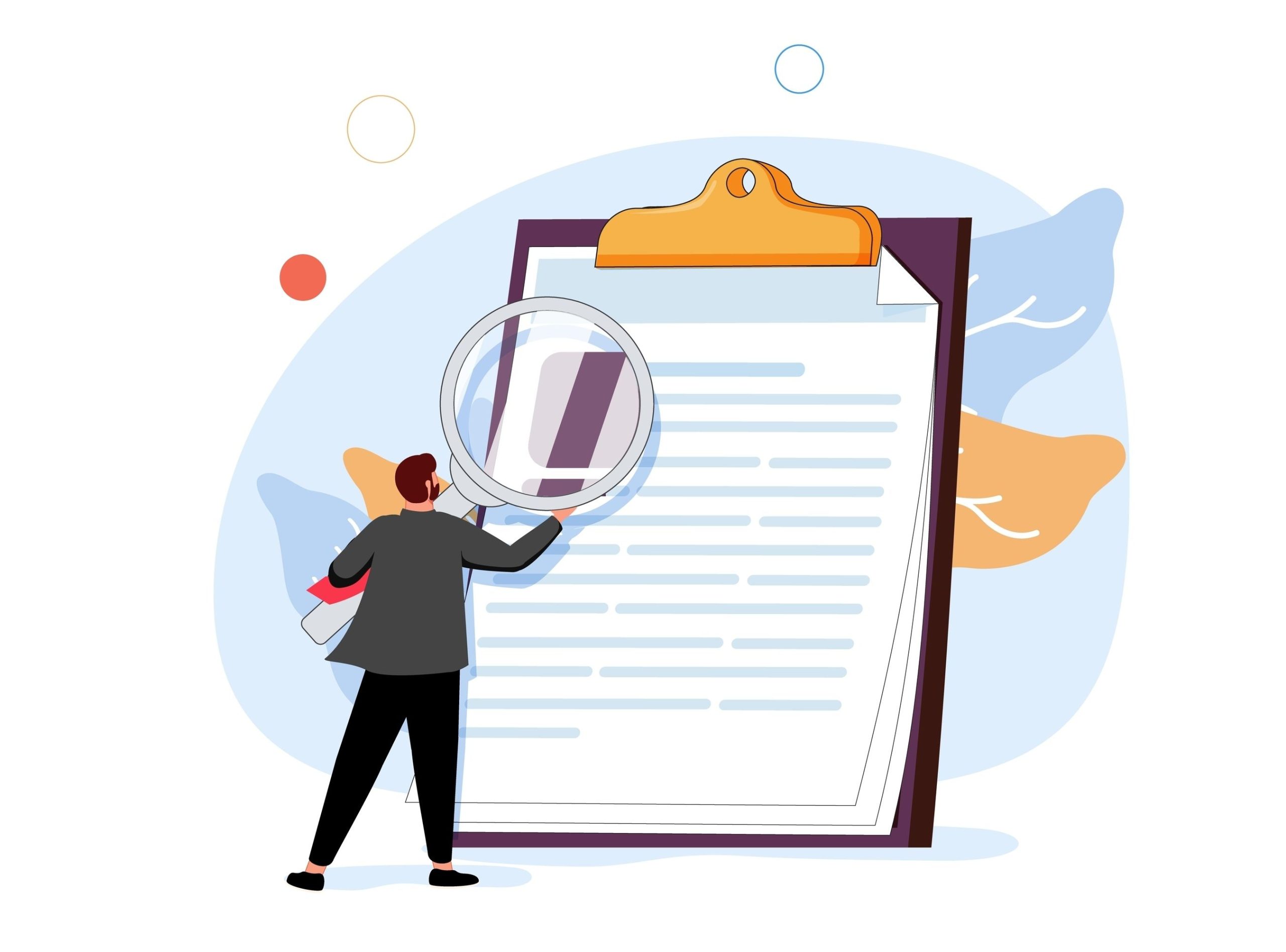
Best Plagiarism Checkers of 2024 Reviewed & Compared
- Updated August 20, 2024

15 Things You Should Do Before You Move to Another Country
- Updated January 15, 2024
- The global TEFL course directory.

- Get started
Paraphrasing Explained: Definition, Techniques, and Examples for Effective Writing

Table of contents
While researching for your article or essay, you might have encountered a sentence or a paragraph that's so intriguing that you thought you must include it in your content! But you can't use those exact words, right?
Well, paraphrasing is the way to do that. However, the idea is not to steal someone's content but to capitalize on it by drafting a much better version while adding your input and research.
You can always have your own piece written and make it more intuitive to your audience while using the original one as a reference.
'It's easier said than done'
'Although the idea sounds like a good one in theory, it will still be difficult to actually execute it.'
Both the above sentences have similar meanings, but they appear different. That's a classic example of paraphrasing.
But how do you paraphrase while keeping the essence of the original sentence intact and still not plagiarising?
That calls for some tips and tricks! And here, we have got you covered.
In this blog, we will explain what is paraphrasing, why you might need to paraphrase, how to paraphrase, and the difference between paraphrasing and summarizing.
Let's dive in.
Table Of Contents
What is paraphrasing.
Paraphrasing is the process of restructuring or tweaking a paragraph so that it represents the same meaning or idea from the original statement but with different sentence construction, choice of words, formats, or, possibly, tone or voice.
It means making the meaning clearer, especially in a shorter and simpler form, along with your thoughts/comments. In addition to borrowing, clarifying, or expanding on information and your comments, paraphrasing is doing all the above-stated actions without plagiarizing the information.
Why do people paraphrase?
There are several reasons why people paraphrase. Following are some of the reasons for paraphrasing.
- Paraphrasing helps avoid plagiarism.
- It also provides support for claims or adds credibility to the writing.
- It demonstrates your understanding and provides an alternative method to using indirect and direct quotes in your own words (referenced) infrequently.
- Paraphrasing in academic research helps utilize source material for writing essays, providing evidence that the essay is appropriately referenced.
- Paraphrasing in writing helps you ensure that you use sources to communicate something important to your readers.
What is paraphrasing plagiarism?
Plagiarism is stealing someone else’s ideas without acknowledgment. Plagiarism can come in several forms: global, verbatim, patchwork, paraphrase, and self-plagiarism. However, apart from global plagiarism, other types of plagiarism are often accidental.
Although paraphrasing is accepted , rephrasing sentences or paraphrasing someone else’s idea without citing or acknowledging is considered paraphrasing plagiarism. Even when translating someone else’s words, if the translated text from another language is not cited, this is also a type of paraphrasing plagiarism.
How to paraphrase?
When it comes to paraphrasing, you can either do it manually or use an AI-powered tool like Writesonic to rephrase your content. While we will guide you through both processes, here is how to paraphrase with Writesonic Content Rephraser.
Check out the steps below:
- Log in to Writesonic or sign up (if you haven't already done so!).
- Search for Content Rephrase and select the tool from the results.

- On the Content Rephrase v2 window, put the text in the Content box.
- Select the Words Length from the drop-down for the rephrased content.
- Select your Brand Voice / Tone of Voice from the list.
- Finally, hit the Generate button.

If you are not satisfied with the output received, simply click on the Regenerate button.

If you want, you can also paraphrase manually without using any tool. Here is a guide on different techniques to paraphrase effectively,
What is the difference between summarizing and paraphrasing?
Summarizing is a concise statement that briefs the contents of the passage. On the other hand, paraphrasing is just rewriting sentences using your own words. In fact, there is more than one difference between summarizing and paraphrasing.
Check out the comparison chart to learn the differences between summarizing and paraphrasing, besides their definition.
Definition | Summarizing refers to the concise statements and key points of the original work or piece | Paraphrasing refers to restating the texts or passages in your own words based on your comprehension |
Underlines | The central idea of the original sentence | Simplifies and clarifies the original sentence or texts |
Length of the text | It is shorter when compared with the original writing or piece | It is almost the same length as the original statement |
Objective | To express the general concept of the piece or work briefly using a precise language | To break down the complex words into more comprehensible and simple words |
Uses | When you want to provide a quick review of the topic or piece | When you want to present your point of view in different words while incorporating the authors’ ideas as well |
Doesn’t include | Unnecessary information, details, examples, and reader’s interpretations | Problematic language, lengthy quotes, same words from the original passage or phrases from the original sentence. |
Top 5 tips and tricks to follow while paraphrasing
Following are 5 digestible paraphrasing tips you can incorporate when paraphrasing your sentences.
Identify the important parts
You can't paraphrase until you understand the meaning! In fact, paraphrasing demonstrates your understanding of the original material. Thus, read the original content until you get enough ideas to explain it in your own words.
Once you have the original concept, reduce it to the key points, and don't focus on the sentence structures at the start. Another way to rewrite or reword the source without losing your key points is to use a paraphrasing tool .
Change up the words
Change the words using synonyms while noting down the concepts or key points. However, if you face writer's block and can’t find the right words, which can make your content incompetent, use rewording tools .
AI rewording tools can come up with synonyms, organize your phrases, and enhance your sentence structure. Moreover, an AI wording tool ensures the content is unique, original, and plagiarism-free.
Make sure meaning is preserved
Although paraphrasing requires rewording and changing the words, ensure that the same meaning must be maintained along with the ideas. In addition to that, keep your word choices lucid and simple to convey the relevant information from the source without sticking too close to the original source.
One way to keep your writing consistent when paraphrasing is by using paraphrasing tools. The AI tool can alter the sentence structure while maintaining the original meaning.
Double-check for grammar and punctuation
When paraphrasing, double-check and compare the paraphrased copy with the original passage. Make adjustments to ensure it’s completely rewritten. Also, make sure that the grammar and punctuation are correct.
Double-checking your work for grammar and punctuation by reviewing it more than once improves its quality. Paragraph rewriters use AI for paraphrasing, which can tweak the tonality and narrative, ensure a grammar check, and make the content concise and conceivable.
Use an online paraphrasing tool like Writesonic
As stated previously in the article, using a paraphrasing tool is the fastest way to paraphrase your sources without plagiarizing them. One such creative AI writing tool that assists you with paraphrasing is Writesonic .
Writesonic is trained on billions of parameters. It refines the grammar, spelling, and style to generate original, paraphrased content. In addition to that, Writesonic generates unique and plagiarism-free content that resonates with the target audience with just one click.
With AI chatbots like ChatGPT by Open AI and ChatSonic by Writesonic taking away all the limelight, they can also be used effectively for paraphrasing text.
Different strategies for paraphrasing
Even though there are AI paraphrasing tools to make the work easier, the following are different strategies you can use to paraphrase your sentence.
Understanding the main ideas
One of the strategies for successful paraphrasing is understanding the source's main idea and writing style. When you understand the idea behind the sentence, it becomes easier to explain in your own words.
After taking note of the important nouns and verbs, see which synonyms might be appropriate to replace. You can use a synonym that expresses the same meaning for the key concepts or points in the original sentence.
Making connections
When you use synonyms, it is given that the structure may also need a little changing. So, instead of just swapping a single word, make appropriate changes around the words to make sense of the sentence. Here, your paraphrasing skills come into play.
Here is an example of paraphrasing: “ According to scientists, there is another method to achieve a pollution-free environment.”
The paraphrased content would say something like - “Scientists found an alternate way to attain a pollution-free environment.”
In the above sentence, the adjective ‘according to’ is swapped with the verb ‘found’ along with other necessary changes. These changes are made to maintain a harmonious connection between the words and to make the sentence sensible while retaining its meaning and avoiding plagiarism.
Focusing on syntax
The syntax is the arrangement of words in a specific order written in well-formed phrases or sentences. While paraphrasing is about restating or rewording, ensure to focus on the well-structured and grammatically correct sentences by making appropriate connections or paraphrases.
Benefits of paraphrasing
Paraphrasing has some benefits that you can reap in aspects of your writing skills and learning abilities.
Improves writing skills
Paraphrasing requires you to change the passages in your own words, which may help refurbish your writing skills. Rewriting or paraphrasing is essential in writing essays or research papers.
Paraphrasing allows you to express ideas or information with a fresh set of words to make the same thing sound more interesting or even simpler. You can see paraphrasing as an opportunity to enhance your writing skills without plagiarizing someone else’s work. This includes rewriting and expressing the ideas in your own voice.
Increases comprehension
Comprehension is understanding the written material and explaining what is read. At the same time, paraphrasing demonstrates your understanding of the complex details from the source and your ability to explain the connections between main points. Therefore, it's obvious that you can comprehend a text better when you paraphrase it.
Moreover, it was found that paraphrasing for comprehension is an excellent tool for reinforcing reading skills. It can assist by identifying the main ideas, finding supporting details, and identifying the original author's voice.
So when you rewrite the sentence in your own words, you can double-check your comprehension. This helps improve your awareness and allows you to gain a better understanding of the content, and allows you to write better.
Enhances understanding
To paraphrase words or phrases, you must extract their meaning by reading the material again and again and fully understanding the context. This allows the reader to understand the original statement more clearly by adding more clarity to it. So, when you paraphrase the original phrase, you articulate your thoughts and ideas more clearly and come up with new insights and perspectives on the topic.
Saves time & energy
Creating content from scratch is difficult and requires much time and energy. It requires you to do proper research, which is both time and energy-consuming.
An easy solution to the painstaking process is paraphrasing your sentence with appropriate citations. This will allow you to create the content without spending much time on research and ideation, saving much of your time and energy.
Helps avoid plagiarism
Among all the benefits, the most favorable benefit of paraphrasing is that it helps you avoid the accusation of plagiarism. You are simply committing plagiarism (an offense as stated by the federal government) when you use the same idea and speech from the original text, word by word.
However, by rewording the original source, you can present the ideas in your own words and easily avoid plagiarism. What’s more, paraphrasing can save you in both accidental and deliberate cases of plagiarism.
Paraphrasing examples
Now that we have known all about paraphrasing, its reasons for use, and its benefits, let’s look at some examples of paraphrasing and how exactly you can paraphrase.
#1 Example of Paraphrasing
| Paraphrased |
Apples are domesticated trees and fruit of the rose family which is one of the most widely cultivated tree fruits. They are predominantly grown for sale as fresh fruit, although apples are also used commercially for vinegar, juice, jelly, applesauce, and apple butter and are canned as pie stock. Fresh apples are either eaten raw or cooked. Cooked apples are used in a variety of ways. They are frequently used as a pastry filling, apple pie being the archetypal American dessert. | Apples are domesticated trees and fruit of the rose family, and they are one of the most widely cultivated tree fruits. Apples are primarily grown for fresh fruit sales, though they are also used commercially in the production of vinegar, juice, jelly, applesauce, and butter, as well as canned pie filling. They are consumed either raw or cooked. However, a variety of recipes call for cooked apples. Apple pie is the most iconic American dessert, where apples are frequently used as a filling for pastries. |
#2 Example of Paraphrasing
| Paraphrased |
The word paper originated from the reedy plant papyrus. Papyrus plants grow abundantly along the Nile River in Egypt. Prior to the invention of the paper machine, papermaking can be traced to about 105AD, when Ts’ai Lun— an official in the Imperial court of China, created a sheet of paper by using mulberry, old rags, and other bast fibers along with fishnets, and hemp waste. By the 14th century, a number of paper mills existed in Europe. And later in 1798 Nicolas-Louis Robert in France constructed a moving screen belt that would receive a continuous flow of stock and deliver an unbroken sheet of wet paper. In 1800 a book was published comprising practical methods for manufacturing paper from wood pulp and other vegetable pulps. | The term "paper" comes from the name of the reedy plant papyrus which thrives along Egypt's Nile River. Prior to the invention of the paper machine, papermaking can be traced back to 105AD, when Ts'ai Lun, an official in the Imperial court of China, created a sheet of paper from mulberry and other bast fibers, as well as fishnets, old rags, and hemp waste. By the 14th century, Europe had several paper mills. Later, in 1798, Nicolas-Louis Robert in France built a moving screen belt that would take in a constant flow of stock and deliver an intact sheet of wet paper. In 1800, a book was published that detailed practical methods for making paper from wood pulp and other vegetable pulps. |
Final Words
Once you grasp the concept of paraphrasing, it can be a powerful tool for writers. It provides several benefits in aspects of writing and learning skills. The correct way and right use of paraphrasing can protect writers from accusations of plagiarism.
However, note that successful and correct paraphrasing requires the use of multiple techniques each time. So, it is not sufficient to simply replace the keywords or the main concepts with synonyms.
One of the easiest ways to reword the original source is by using an AI writing tool. Writesonic is a well-known AI paraphrasing tool that can refine grammar, spelling, and style to generate original plagiarism-free AI content .
Satwick Ghosh
Want to automate your seo .
No Credit Card Required
Subscribe to never miss out on content inspiration

How to Build Effective Topic Clusters for Maximum SEO Impact?
16 Best SEO Content Writing Tools

Copywriting vs. Content Writing: Is There a Difference?

Get started with Writesonic!

Earn 30% Lifetime Commission as an Affiliate!

The Importance of Paraphrasing: Enhancing Clarity and Originality
In the realm of writing, paraphrasing plays a vital role in conveying information effectively while maintaining clarity and originality. Whether you’re a student working on an academic paper or a professional crafting a report, paraphrasing allows you to express ideas in your own words while staying true to the essence of the original source. In this blog post, we will explore the importance of paraphrasing, highlighting how it enhances clarity and originality in your writing. Throughout the discussion, we will provide real examples to illustrate the significance of this skill.
- Clarity: Making Complex Concepts Accessible
Paraphrasing serves as a powerful tool to enhance clarity in writing. It allows you to rephrase complex concepts, making them more accessible to your audience. By rewording information in a manner that aligns with your readers’ comprehension level, you ensure that they can grasp and engage with the content more effectively.
Example: Let’s consider a paragraph from a scientific journal article discussing climate change:
Original paragraph: “The intricate interplay between anthropogenic activities and greenhouse gas emissions has resulted in a discernible imbalance in Earth’s energy budget, leading to unprecedented alterations in climatic patterns across the globe.”
While this paragraph contains important information, its complex language might be challenging for a broader audience to understand. Paraphrasing can help make the content more accessible without losing its essence.
Paraphrased paragraph: “Human activities and the release of greenhouse gases have disrupted Earth’s energy balance, causing significant changes in weather patterns worldwide.”
The paraphrased paragraph maintains the core message of the original text but presents it in a simpler and more comprehensible way.
- Originality: Expressing Ideas in Your Own Voice
Paraphrasing allows you to express ideas in your own voice, promoting originality in your writing. Rather than relying on direct quotations or copying content verbatim, paraphrasing enables you to integrate external sources seamlessly while infusing your unique perspective. This helps establish your credibility as a writer and demonstrates your understanding of the subject matter.
Example: Consider a statement from a book about leadership:
Original quote: “Effective leaders possess the ability to inspire and motivate their team members, instilling a shared vision and fostering a positive work environment.”
To incorporate this idea into your writing while maintaining originality, you can paraphrase it:
Paraphrased sentence: “Skilled leaders have the power to inspire and motivate their team, cultivating a sense of shared purpose and nurturing a productive and harmonious workplace.”
The paraphrased sentence retains the core message of the original quote but expresses it in your own words and style.
- Avoiding Plagiarism: Respecting Intellectual Property
Plagiarism is a serious offense in academia and professional writing. Paraphrasing plays a crucial role in avoiding plagiarism by ensuring that you present ideas from external sources in your own words while still crediting the original author. By paraphrasing effectively, you demonstrate integrity and respect for intellectual property rights.
Example: Suppose you are writing an essay on the history of democracy and come across a paragraph in a reputable source:
Original passage: “The establishment of democratic principles laid the foundation for modern governance, emphasizing the significance of individual liberties, political participation, and the rule of law.”
To incorporate this information into your essay without plagiarizing, you can paraphrase it:
Paraphrased sentence: “The inception of democratic values formed the basis for contemporary governance, highlighting the importance of personal freedoms, active political engagement, and adherence to legal frameworks.”
By paraphrasing and attributing the original idea to the source, you maintain academic integrity while incorporating valuable information into your own work.
- Crafting Engaging and Unique Content
Paraphrasing contributes to the creation of engaging and unique content. By avoiding excessive reliance on direct quotations and injecting your own voice and style into the writing, you can captivate your readers and provide a fresh perspective. Paraphrasing also enables you to integrate multiple sources seamlessly, synthesizing diverse viewpoints and strengthening the overall quality of your work.
Example: Consider a paragraph from a news article about renewable energy:
Original paragraph: “The adoption of renewable energy sources has witnessed significant growth in recent years. Solar power, wind energy, and hydroelectricity have emerged as viable alternatives to fossil fuels, offering sustainable and environmentally friendly options for power generation.”
To create engaging and unique content, you can paraphrase this paragraph while incorporating your own insights:
Paraphrased paragraph: “In the past decade, renewable energy has experienced remarkable expansion, with solar power, wind energy, and hydroelectricity emerging as compelling substitutes for traditional fossil fuels. These environmentally sustainable options have revolutionized power generation, paving the way for a greener future.”
The paraphrased paragraph integrates the main ideas from the original source while incorporating your unique perspective, making the content more engaging and original.
Conclusion :
Paraphrasing is an essential skill for any writer, enabling you to enhance clarity and originality in your writing. By paraphrasing effectively, you make complex concepts more accessible to your readers, express ideas in your own voice, avoid plagiarism, and craft engaging and unique content. Practice and refine your paraphrasing skills to become a proficient writer who can effectively integrate external sources while maintaining your own style and perspective. Remember, paraphrasing is not about simply replacing words; it’s about capturing the essence of the original content and expressing it in a way that resonates with your audience.
Leave a Comment Cancel Reply
Your email address will not be published. Required fields are marked *
Save my name, email, and website in this browser for the next time I comment.
About Stanford GSB
- The Leadership
- Dean’s Updates
- School News & History
- Commencement
- Business, Government & Society
- Centers & Institutes
- Center for Entrepreneurial Studies
- Center for Social Innovation
- Stanford Seed
About the Experience
- Learning at Stanford GSB
- Experiential Learning
- Guest Speakers
- Entrepreneurship
- Social Innovation
- Communication
- Life at Stanford GSB
- Collaborative Environment
- Activities & Organizations
- Student Services
- Housing Options
- International Students
Full-Time Degree Programs
- Why Stanford MBA
- Academic Experience
- Financial Aid
- Why Stanford MSx
- Research Fellows Program
- See All Programs
Non-Degree & Certificate Programs
- Executive Education
- Stanford Executive Program
- Programs for Organizations
- The Difference
- Online Programs
- Stanford LEAD
- Seed Transformation Program
- Aspire Program
- Seed Spark Program
- Faculty Profiles
- Academic Areas
- Awards & Honors
- Conferences
Faculty Research
- Publications
- Working Papers
- Case Studies
Research Hub
- Research Labs & Initiatives
- Business Library
- Data, Analytics & Research Computing
- Behavioral Lab

Research Labs
- Cities, Housing & Society Lab
- Golub Capital Social Impact Lab
Research Initiatives
- Corporate Governance Research Initiative
- Corporations and Society Initiative
- Policy and Innovation Initiative
- Rapid Decarbonization Initiative
- Stanford Latino Entrepreneurship Initiative
- Value Chain Innovation Initiative
- Venture Capital Initiative
- Career & Success
- Climate & Sustainability
- Corporate Governance
- Culture & Society
- Finance & Investing
- Government & Politics
- Leadership & Management
- Markets and Trade
- Operations & Logistics
- Opportunity & Access
- Technology & AI
- Opinion & Analysis
- Email Newsletter
Welcome, Alumni
- Communities
- Digital Communities & Tools
- Regional Chapters
- Women’s Programs
- Identity Chapters
- Find Your Reunion
- Career Resources
- Job Search Resources
- Career & Life Transitions
- Programs & Webinars
- Career Video Library
- Alumni Education
- Research Resources
- Volunteering
- Alumni News
- Class Notes
- Alumni Voices
- Contact Alumni Relations
- Upcoming Events
Admission Events & Information Sessions
- MBA Program
- MSx Program
- PhD Program
- Alumni Events
- All Other Events
Matt Abrahams: The Power of the Paraphrase
An expert on public speaking shows how paraphrasing can help you navigate tricky communication situations.
November 19, 2014

A job seeker raises his hand to ask a question | Reuters/Rick Wilking
When you are giving a public presentation, don’t you hate it when you face … the dreaded question. You know the one: the emotionally loaded challenge that serves to undermine everything you presented prior. You had hoped you wouldn’t get it, but here it is. Or, you may face … the obnoxious meeting participant. You know this guy: He thinks he’s Mr. Smarty-Pants and wants everyone to know it. He ruins your meeting by going on long rants that contribute little and waste much.
These two situations can make even the most confident and calm speaker nervous. One powerful way to navigate your way through these two tricky communication situations is to rely on paraphrasing. Paraphrasing is a listening and reflecting tool where you restate what others say in your own words. The most effective paraphrases concisely capture the essence of what another speaker says. For example, at the end of your presentation a questioner asks: “In the past you have been slow to release new products. How soon will your new product be available?” You might paraphrase her question in one of the following ways:
- “You’re asking about our availability.”
- “You’d like to know about our release schedule.”
- “Our release timeline will be … ”
Effective paraphrasing affords you several benefits. In Q&A sessions, for instance, it allows you to:
Make sure you understood the question correctly. After your paraphrase, the question asker has the opportunity to correct you or refine his or her question. There is no sense in answering a question you were not asked.
Think before you respond. Paraphrasing is not very mentally taxing, so while you are speaking your paraphrase you can begin to think of your response.
Acknowledge emotions prior to addressing the issue(s). Occasionally, you may find yourself confronted with an emotionally laden question. In order to be seen as empathetic, and to get the asker to “hear” your answer, you should recognize the emotion as part of your paraphrase. To a questioner who asks, “I get really exasperated when I try to use some of your features. How are you going to make it easier to use your product?” you might say: “I hear that you have emotion around the complexity of our offering.” By acknowledging the emotion, you can more easily move beyond it to address the issue at hand. Please note that you should avoid labeling the emotion, even if the asker does. If someone seems angry, it is better to use terms such as “strong emotion,” “clear concern,” and “passion.” I have seen a number of speakers get into a labeling battle with an audience member when the speaker names a specific emotion that the asker took offense to (e.g., saying an audience member seems frustrated when he is actually angry).
Reframe the question to focus on something you feel more comfortable addressing. I am not recommending pulling a politician’s trick and pivoting to answer the question you wanted rather than the one you got. Instead, by paraphrasing, you can make the question more comfortable for you to answer. The most striking example I have come across was in a sales situation where a prospect asked the presenter: “How come your prices are ridiculously expensive?” Clearly, the paraphrase “So you’re asking about our ridiculous pricing” is not the way to go. Rather, you can reframe the issue in your paraphrase to be about a topic you are better prepared to address. For example, “So you’d like to know about our product’s value.” Price is clearly part of value, but you start by describing the value and return on investment, which will likely soften the blow of the price.
Using paraphrases can also help you in facilitation situations, such as a meeting. In meetings, paraphrasing allows you to:
Acknowledge the participant’s effort. For many people, contributing in meetings can be daunting. There are real consequences for misspeaking or sounding unprepared. By paraphrasing the contributions you get from others, you validate the person’s effort by signaling that you really listened and valued their input.
Link various questions/ideas. You can pull together disparate contributions and questions and engage different participants by relating a current statement to previous ones. For example, you might say: “Your comment about our profitability links to the question a few minutes ago about our financial outlook.”
Manage over-contributors. Someone who over-shares or dominates a meeting with his or her opinions can be very disruptive and disrespectful. If it is your meeting, then the other participants will expect you to manage the situation. If you don’t, you will lose control and potentially credibility. Paraphrasing can help you move beyond the over-contributor while looking tactful. Fortunately, even the most loquacious person needs to inhale once in a while. During a pause, simply paraphrase a meaningful portion of the person’s diatribe and place focus elsewhere — to another person or topic. For example, you might say, “Forrest’s point about manufacturing delays is a good one. Laurie, what do you think?” Or, “Forrest’s point about manufacturing delays is a good one. What other issues are affecting our release schedule?” In both cases, you have politely informed Forrest that he is done, and you’ve turned the focus away from him and back to your agenda.
Beginning a paraphrase can sometimes be tricky, and people often ask me for suggestions for ways to initiate their paraphrases. Try one of the following lines to help you start your paraphrase:
- “So what you are saying/asking is … ”
- “What is important to you is … ”
- “You’d like to know more about … ”
- “The central idea of your question/comment is … ”
Paraphrasing has the power to help you connect with your audience, manage emotions, and steer the conversation. And once you begin to use the technique, you will realize it has the power to help you not only in presentations and meetings, but in virtually any interpersonal conversation.
For media inquiries, visit the Newsroom .
Explore More
Creative communication: how our design choices illustrate our values, can we be candid how to communicate clearly and directly, directive speech vs. dialogue: how leaders communicate with clarity, balance, editor’s picks.

July 25, 2014 Matt Abrahams: A Good Question Can Be the Key to a Successful Presentation A Stanford GSB lecturer and expert on public speaking explains how you can become a more compelling and confident presenter by asking – not telling – in the right situations.
March 13, 2014 Matt Abrahams: How to Make Unforgettable Presentations A Stanford lecturer and expert on public speaking explains how to ensure your audience remembers what they hear and see.
March 04, 2014 Matt Abrahams: Presentations and the Art of the Graceful Recovery A Stanford lecturer and expert on public speaking explains what to do when memory fails.
February 26, 2014 Matt Abrahams: How Do You Make a Memorable Presentation? A Stanford lecturer and expert on public speaking explains how to manage anxiety and deliver a smooth presentation.
- See the Current DEI Report
- Supporting Data
- Research & Insights
- Share Your Thoughts
- Search Fund Primer
- Teaching & Curriculum
- Affiliated Faculty
- Faculty Advisors
- Louis W. Foster Resource Center
- Defining Social Innovation
- Impact Compass
- Global Health Innovation Insights
- Faculty Affiliates
- Student Awards & Certificates
- Changemakers
- Dean Jonathan Levin
- Dean Garth Saloner
- Dean Robert Joss
- Dean Michael Spence
- Dean Robert Jaedicke
- Dean Rene McPherson
- Dean Arjay Miller
- Dean Ernest Arbuckle
- Dean Jacob Hugh Jackson
- Dean Willard Hotchkiss
- Faculty in Memoriam
- Stanford GSB Firsts
- Class of 2024 Candidates
- Certificate & Award Recipients
- Dean’s Remarks
- Keynote Address
- Teaching Approach
- Analysis and Measurement of Impact
- The Corporate Entrepreneur: Startup in a Grown-Up Enterprise
- Data-Driven Impact
- Designing Experiments for Impact
- Digital Marketing
- The Founder’s Right Hand
- Marketing for Measurable Change
- Product Management
- Public Policy Lab: Financial Challenges Facing US Cities
- Public Policy Lab: Homelessness in California
- Lab Features
- Curricular Integration
- View From The Top
- Formation of New Ventures
- Managing Growing Enterprises
- Startup Garage
- Explore Beyond the Classroom
- Stanford Venture Studio
- Summer Program
- Workshops & Events
- The Five Lenses of Entrepreneurship
- Leadership Labs
- Executive Challenge
- Arbuckle Leadership Fellows Program
- Selection Process
- Training Schedule
- Time Commitment
- Learning Expectations
- Post-Training Opportunities
- Who Should Apply
- Introductory T-Groups
- Leadership for Society Program
- Certificate
- 2024 Awardees
- 2023 Awardees
- 2022 Awardees
- 2021 Awardees
- 2020 Awardees
- 2019 Awardees
- 2018 Awardees
- Social Management Immersion Fund
- Stanford Impact Founder Fellowships
- Stanford Impact Leader Prizes
- Social Entrepreneurship
- Stanford GSB Impact Fund
- Economic Development
- Energy & Environment
- Stanford GSB Residences
- Environmental Leadership
- Stanford GSB Artwork
- A Closer Look
- California & the Bay Area
- Voices of Stanford GSB
- Business & Beneficial Technology
- Business & Sustainability
- Business & Free Markets
- Business, Government, and Society Forum
- Get Involved
- Second Year
- Global Experiences
- JD/MBA Joint Degree
- MA Education/MBA Joint Degree
- MD/MBA Dual Degree
- MPP/MBA Joint Degree
- MS Computer Science/MBA Joint Degree
- MS Electrical Engineering/MBA Joint Degree
- MS Environment and Resources (E-IPER)/MBA Joint Degree
- Academic Calendar
- Clubs & Activities
- LGBTQ+ Students
- Military Veterans
- Minorities & People of Color
- Partners & Families
- Students with Disabilities
- Student Support
- Residential Life
- Student Voices
- MBA Alumni Voices
- A Week in the Life
- Career Support
- Employment Outcomes
- Cost of Attendance
- Knight-Hennessy Scholars Program
- Yellow Ribbon Program
- BOLD Fellows Fund
- Application Process
- Loan Forgiveness
- Contact the Financial Aid Office
- Evaluation Criteria
- GMAT & GRE
- English Language Proficiency
- Personal Information, Activities & Awards
- Professional Experience
- Letters of Recommendation
- Optional Short Answer Questions
- Application Fee
- Reapplication
- Deferred Enrollment
- Joint & Dual Degrees
- Entering Class Profile
- Event Schedule
- Ambassadors
- New & Noteworthy
- Ask a Question
- See Why Stanford MSx
- Is MSx Right for You?
- MSx Stories
- Leadership Development
- How You Will Learn
- Admission Events
- Personal Information
- GMAT, GRE & EA
- English Proficiency Tests
- Career Change
- Career Advancement
- Daycare, Schools & Camps
- U.S. Citizens and Permanent Residents
- Requirements
- Requirements: Behavioral
- Requirements: Quantitative
- Requirements: Macro
- Requirements: Micro
- Annual Evaluations
- Field Examination
- Research Activities
- Research Papers
- Dissertation
- Oral Examination
- Current Students
- Education & CV
- International Applicants
- Statement of Purpose
- Reapplicants
- Application Fee Waiver
- Deadline & Decisions
- Job Market Candidates
- Academic Placements
- Stay in Touch
- Faculty Mentors
- Current Fellows
- Standard Track
- Fellowship & Benefits
- Group Enrollment
- Program Formats
- Developing a Program
- Diversity & Inclusion
- Strategic Transformation
- Program Experience
- Contact Client Services
- Campus Experience
- Live Online Experience
- Silicon Valley & Bay Area
- Digital Credentials
- Faculty Spotlights
- Participant Spotlights
- Eligibility
- International Participants
- Stanford Ignite
- Frequently Asked Questions
- Operations, Information & Technology
- Organizational Behavior
- Political Economy
- Classical Liberalism
- The Eddie Lunch
- Accounting Summer Camp
- California Econometrics Conference
- California Quantitative Marketing PhD Conference
- California School Conference
- China India Insights Conference
- Homo economicus, Evolving
- Political Economics (2023–24)
- Scaling Geologic Storage of CO2 (2023–24)
- A Resilient Pacific: Building Connections, Envisioning Solutions
- Adaptation and Innovation
- Changing Climate
- Civil Society
- Climate Impact Summit
- Climate Science
- Corporate Carbon Disclosures
- Earth’s Seafloor
- Environmental Justice
- Operations and Information Technology
- Organizations
- Sustainability Reporting and Control
- Taking the Pulse of the Planet
- Urban Infrastructure
- Watershed Restoration
- Junior Faculty Workshop on Financial Regulation and Banking
- Ken Singleton Celebration
- Marketing Camp
- Quantitative Marketing PhD Alumni Conference
- Presentations
- Theory and Inference in Accounting Research
- Stanford Closer Look Series
- Quick Guides
- Core Concepts
- Journal Articles
- Glossary of Terms
- Faculty & Staff
- Researchers & Students
- Research Approach
- Charitable Giving
- Financial Health
- Government Services
- Workers & Careers
- Short Course
- Adaptive & Iterative Experimentation
- Incentive Design
- Social Sciences & Behavioral Nudges
- Bandit Experiment Application
- Conferences & Events
- Reading Materials
- Energy Entrepreneurship
- Faculty & Affiliates
- SOLE Report
- Responsible Supply Chains
- Current Study Usage
- Pre-Registration Information
- Participate in a Study
- Founding Donors
- Location Information
- Participant Profile
- Network Membership
- Program Impact
- Collaborators
- Entrepreneur Profiles
- Company Spotlights
- Seed Transformation Network
- Responsibilities
- Current Coaches
- How to Apply
- Meet the Consultants
- Meet the Interns
- Intern Profiles
- Collaborate
- Research Library
- News & Insights
- Program Contacts
- Databases & Datasets
- Research Guides
- Consultations
- Research Workshops
- Career Research
- Research Data Services
- Course Reserves
- Course Research Guides
- Material Loan Periods
- Fines & Other Charges
- Document Delivery
- Interlibrary Loan
- Equipment Checkout
- Print & Scan
- MBA & MSx Students
- PhD Students
- Other Stanford Students
- Faculty Assistants
- Research Assistants
- Stanford GSB Alumni
- Telling Our Story
- Staff Directory
- Site Registration
- Alumni Directory
- Alumni Email
- Privacy Settings & My Profile
- Success Stories
- The Story of Circles
- Support Women’s Circles
- Stanford Women on Boards Initiative
- Alumnae Spotlights
- Insights & Research
- Industry & Professional
- Entrepreneurial Commitment Group
- Recent Alumni
- Half-Century Club
- Fall Reunions
- Spring Reunions
- MBA 25th Reunion
- Half-Century Club Reunion
- Faculty Lectures
- Ernest C. Arbuckle Award
- Alison Elliott Exceptional Achievement Award
- ENCORE Award
- Excellence in Leadership Award
- John W. Gardner Volunteer Leadership Award
- Robert K. Jaedicke Faculty Award
- Jack McDonald Military Service Appreciation Award
- Jerry I. Porras Latino Leadership Award
- Tapestry Award
- Student & Alumni Events
- Executive Recruiters
- Interviewing
- Land the Perfect Job with LinkedIn
- Negotiating
- Elevator Pitch
- Email Best Practices
- Resumes & Cover Letters
- Self-Assessment
- Whitney Birdwell Ball
- Margaret Brooks
- Bryn Panee Burkhart
- Margaret Chan
- Ricki Frankel
- Peter Gandolfo
- Cindy W. Greig
- Natalie Guillen
- Carly Janson
- Sloan Klein
- Sherri Appel Lassila
- Stuart Meyer
- Tanisha Parrish
- Virginia Roberson
- Philippe Taieb
- Michael Takagawa
- Terra Winston
- Johanna Wise
- Debbie Wolter
- Rebecca Zucker
- Complimentary Coaching
- Changing Careers
- Work-Life Integration
- Career Breaks
- Flexible Work
- Encore Careers
- Join a Board
- D&B Hoovers
- Data Axle (ReferenceUSA)
- EBSCO Business Source
- Global Newsstream
- Market Share Reporter
- ProQuest One Business
- RKMA Market Research Handbook Series
- Student Clubs
- Entrepreneurial Students
- Stanford GSB Trust
- Alumni Community
- How to Volunteer
- Springboard Sessions
- Consulting Projects
- 2020 – 2029
- 2010 – 2019
- 2000 – 2009
- 1990 – 1999
- 1980 – 1989
- 1970 – 1979
- 1960 – 1969
- 1950 – 1959
- 1940 – 1949
- Service Areas
- ACT History
- ACT Awards Celebration
- ACT Governance Structure
- Building Leadership for ACT
- Individual Leadership Positions
- Leadership Role Overview
- Purpose of the ACT Management Board
- Contact ACT
- Business & Nonprofit Communities
- Reunion Volunteers
- Ways to Give
- Fiscal Year Report
- Business School Fund Leadership Council
- Planned Giving Options
- Planned Giving Benefits
- Planned Gifts and Reunions
- Legacy Partners
- Giving News & Stories
- Giving Deadlines
- Development Staff
- Submit Class Notes
- Class Secretaries
- Board of Directors
- Health Care
- Sustainability
- Class Takeaways
- All Else Equal: Making Better Decisions
- If/Then: Business, Leadership, Society
- Grit & Growth
- Think Fast, Talk Smart
- Spring 2022
- Spring 2021
- Autumn 2020
- Summer 2020
- Winter 2020
- In the Media
- For Journalists
- DCI Fellows
- Other Auditors
- Academic Calendar & Deadlines
- Course Materials
- Entrepreneurial Resources
- Campus Drive Grove
- Campus Drive Lawn
- CEMEX Auditorium
- King Community Court
- Seawell Family Boardroom
- Stanford GSB Bowl
- Stanford Investors Common
- Town Square
- Vidalakis Courtyard
- Vidalakis Dining Hall
- Catering Services
- Policies & Guidelines
- Reservations
- Contact Faculty Recruiting
- Lecturer Positions
- Postdoctoral Positions
- Accommodations
- CMC-Managed Interviews
- Recruiter-Managed Interviews
- Virtual Interviews
- Campus & Virtual
- Search for Candidates
- Think Globally
- Recruiting Calendar
- Recruiting Policies
- Full-Time Employment
- Summer Employment
- Entrepreneurial Summer Program
- Global Management Immersion Experience
- Social-Purpose Summer Internships
- Process Overview
- Project Types
- Client Eligibility Criteria
- Client Screening
- ACT Leadership
- Social Innovation & Nonprofit Management Resources
- Develop Your Organization’s Talent
- Centers & Initiatives
- Student Fellowships
Academic Writing & Research
An online resource for students and researchers

What is Paraphrasing and Why Does it Matter in Academic Writing
In the worlds of academic writing, journalism, and professional communication, paraphrasing is a skill that often goes unnoticed but plays a pivotal role in conveying information effectively and ethically. But what is paraphrasing exactly? In this post, we explore the art of paraphrasing, what it entails, and why it matters in various contexts.
What Is Paraphrasing?
Paraphrasing is the process of rephrasing or rewording a piece of text, whether it’s a sentence, a paragraph, or an entire document, in your own words while retaining the original meaning. The goal is to convey the same message but with a different sentence structure or wording. Essentially, it’s like expressing someone else’s ideas using your unique voice.
The Importance of Paraphrasing
- Avoiding Plagiarism : Plagiarism, the act of using someone else’s work without proper attribution, is a grave academic and ethical offence. Paraphrasing is a tool that allows writers to incorporate others’ ideas and research while avoiding plagiarism. It demonstrates respect for intellectual property and academic integrity.
- Enhancing Understanding : When you paraphrase, you’re not just changing words; you’re engaging deeply with the source material. This process often leads to a better understanding of the content. It forces you to break down complex ideas and present them in a way that makes sense to you and your readers.
- Fostering Critical Thinking : Paraphrasing encourages critical thinking. To rephrase effectively, you need to analyze the original text, identify its core ideas, and then find a new way to express them. This process sharpens your analytical skills and helps you become a more thoughtful writer.
- Tailoring Information : Different audiences require different writing styles and levels of technicality. Paraphrasing allows you to tailor information to your audience’s needs. For instance, you can take a complex scientific study and present its findings in simpler terms for a general audience.
- Improving Writing Skills : Paraphrasing is a valuable writing exercise. It challenges you to think creatively, expand your vocabulary, and experiment with sentence structure. Over time, this practice can significantly improve your overall writing skills.

How to Paraphrase Effectively
- Read Carefully : Start by thoroughly understanding the source material. Highlight key points and note any technical terms or phrases.
- Put It in Your Own Words : Once you’ve grasped the essence of the content, rewrite it using your unique voice and style. Focus on conveying the same message without duplicating sentence structure or phrasing.
- Use Synonyms : Replace words or phrases with synonyms to avoid direct copying. Be cautious, however, as not all synonyms have the exact same meaning or connotation.
- Maintain Original Meaning : Ensure that the paraphrased version retains the original meaning. Don’t distort or misinterpret the source material.
- Cite Your Sources : Even though you’re rephrasing, it’s crucial to provide proper attribution to the original author or source. This demonstrates honesty and respect for intellectual property.
Main takeaway
Paraphrasing is a valuable skill that enables writers to incorporate external information into their work while maintaining ethical standards and enhancing their understanding of the material. Whether you’re a student, journalist, blogger, or professional communicator, mastering the art of paraphrasing can greatly improve the quality and impact of your writing. It’s not just about changing words; it’s about making ideas accessible and engaging to your audience.

Glenn Stevens
Academic writer and researcher. PhD supervisor. Glenn is also a qualified English teacher. He previously had an extensive career in publishing. Lives in the UK. Need help paraphrasing? Why not contact Glenn!
Share this:
The Art Of Paraphrasing: Mastering the Skill of Rewording
Master the art of paraphrasing to rewrite & integrate ideas into your writing without plagiarism. Learn key techniques & avoid common mistakes!

Thursday, Apr 4, 2024

Introduction
Crafting compelling content often involves incorporating ideas from other sources. But directly copying someone else’s work is plagiarism , a serious offense. This is where paraphrasing comes in. It is a powerful tool that allows you to reword someone else’s thoughts and ideas while preserving their core meaning.
What is Paraphrasing?
Paraphrasing involves rephrasing or rewording someone else’s thoughts or ideas in your own words while preserving the original meaning. It’s a technique that goes beyond mere synonym swapping. Effective rewording requires understanding the core concepts of the source material and expressing them in a fresh, original way.
Why Do Writers Paraphrase?
There are several reasons why rewriting is a valuable skill for writers:
- Avoid Plagiarism: This is the most crucial reason. Paraphrasing ensures you’re not stealing someone else’s work and presenting it as your own.
- Demonstrate Understanding: Paraphrasing effectively shows you grasp the core concepts of the source material.
- Alternative to Quotes: Excessive use of direct quotes can disrupt the flow of your writing. Restating offers a way to integrate valuable information seamlessly.
- Writing in Your Voice: Paraphrasing allows you to use your own words and explanations, making your writing sound more like you.
Paraphrasing vs. Summarizing: Understanding the Difference
While both summarizing and paraphrasing involve rewriting text, they have distinct purposes.
- Paraphrasing: Focuses on restating a specific sentence or passage in your own words, maintaining the original meaning.
- Summarizing: Provides a concise overview of the key points from a larger text, potentially omitting some details.
See the chart below to understand how summarizing and paraphrasing differ:
| Feature | Paraphrasing | Summarizing |
|---|---|---|
| Goal | Restate a text in your own words with similar length and detail | Give a shorter version of the main points |
| Length | Similar length to the original text | Significantly shorter than the original text |
| Focus | Preserve all the original meaning, including specific details | Identify and convey the central points |
| Structure | May follow the original structure but use different words | May reorder information for clarity and conciseness |
| Purpose | Avoid plagiarism, explain complex concepts, provide alternative phrasing | Give a brief overview, and highlight key points for easy recall |
| When to Use | When you want to rephrase a specific sentence or passage without quotation marks | When you need to condense a longer text for quick reference or understanding |
| Importance | Do not steal other people’s work, understand stuff better | Get the main idea fast |
| Doesn’t include | Problematic language, lengthy quotes, same words from the original passage, or phrases from the original sentence | Unnecessary information, details, examples, and reader’s interpretations |
Mastering the Art of Paraphrasing: Effective Techniques
Paraphrasing isn’t just changing words; it’s about understanding a source and saying it in your own way. Here are 5 key strategies to become a rephrasing pro:
Deep Dive into the Source: Before you start rewriting, make sure you really know the material well. Read it a few times, underline the main ideas, and write down important points. Don’t worry too much about remembering every word; just understand the main message.
Swap Words, Not Just Synonyms: Look beyond simple synonyms. Explore alternative phrasings, sentence structures, and even metaphors to convey the same idea in a fresh way. A thesaurus can be handy, but don’t be afraid to get creative. If you’re stuck with writer’s block and struggling to find the right words, consider using rewording tools. AI rewording tools can suggest synonyms, help reorganize your sentences, and improve their structure. Plus, they ensure your content remains unique, original, and free from plagiarism.
Preserve the Core Message: Remember, paraphrasing isn’t about changing the meaning entirely. It’s about freshly conveying the same information. While rewording, constantly evaluate if your paraphrase accurately reflects the original message.
Proofread Like a Pro: Once you’ve crafted your paraphrase, don’t skip the revision stage! Carefully proofread your work to ensure flawless grammar, punctuation, and a smooth sentence flow.
Embrace AI Assistance: Consider using AI paraphrasing tools like LogicBalls to supercharge your workflow. This tool can suggest synonyms and restructure sentences, giving you a solid foundation for your paraphrase. However, remember that AI is a helpful guide, not a replacement for your own understanding and critical thinking.
Different Strategies for Paraphrasing
Want to elevate your writing and avoid plagiarism? Paraphrasing is a crucial skill that allows you to effectively convey ideas from other sources in your own words. While AI tools can be helpful, true mastery comes from understanding the core concepts of paraphrasing. Here are some powerful strategies to take your paraphrasing skills to the next level:
Understand the Main Idea and Writing Style: Before you rephrase, take a deep dive into the source material. Uncover the central message the author is trying to convey (main idea) and pay attention to their writing style. Is it formal, informal, technical, or conversational? Understanding these elements will help you convey the ideas in your style while staying true to the original meaning.
Make Connections: Paraphrasing goes beyond just replacing individual words. Often, substituting a word requires making minor adjustments to the surrounding sentence structure. This ensures your paraphrase retains the original meaning and flows logically. Instead of just changing one word, try rewriting the whole phrase around it. This will give you a brand new sentence with the same meaning.
Focus on Syntax: The power of language comes not just from the words but how they’re put together. The syntax is about the order of words in a sentence. When you paraphrase, focus on the structure of your sentences. Make sure they’re correct, clear, and convey the right meaning.
Benefits of Paraphrasing
Paraphrasing is a skill often associated with avoiding plagiarism, but its benefits extend far beyond that. Here’s why it’s important:
Improve Writing Skills: Paraphrasing is more than just finding different words; it’s about explaining things clearly and briefly in your own words. Doing this regularly helps you pick better words, make stronger sentences, and become a more confident writer with greater impact.
Increases Comprehension: Comprehension means understanding what you read and explaining it in your own words. Paraphrasing shows that you get the main ideas and can connect them, which strengthens your reading skills.
Research has shown that using paraphrasing for comprehension is a great way to strengthen reading skills. It helps to identify key points, locate supporting information, and recognize the author’s unique voice.
When you rewrite sentences in your own way, it helps you make sure you understand. This boosts your awareness and helps you grasp the content better, leading to improved writing.
Enhances Understanding: Paraphrasing makes you think deeper about what the text is saying, so you understand the ideas better.
Save Time & Effort: By effectively paraphrasing existing content and properly crediting your sources, you can use valuable information and save time instead of creating everything from the beginning.
Helps Avoid Plagiarism: By effectively rephrasing source material and providing proper citations, you ensure academic integrity and demonstrate your ability to critically engage with existing knowledge.
Paraphrasing Examples
Let’s delve into some practical examples to solidify your understanding of paraphrasing:
| Paraphrased | |
|---|---|
| Art is a diverse range of human activity and its resulting product that involves creative or imaginative talent generally expressive of technical proficiency, beauty, emotional power, or conceptual ideas. | There is no generally agreed definition of what constitutes art, and its interpretation has varied greatly throughout history and across cultures. In the Western tradition, the three classical branches of visual art are painting, sculpture, and architecture. Theatre, dance, literature, music, film, and other media such as interactive media, are included in a broader definition of the arts. Until the 17th century, art referred to any skill or mastery and was not differentiated from crafts or sciences. In modern usage after the 17th century, where aesthetic considerations are paramount, the fine arts are separated and distinguished from acquired skills in general, such as the decorative or applied arts. |
Common Paraphrasing Mistakes & How to Avoid Them
While paraphrasing offers numerous benefits, there are also pitfalls to avoid:
- Misunderstanding the Original Text: Ensure you fully grasp the meaning of the source material before paraphrasing. Misinterpreting the core message can lead to inaccurate paraphrases.
- Substituting Synonyms Only: Effective rewriting goes beyond simple word swaps. Consider changing the sentence structure, adding or removing phrases, or using different verb tenses for a more natural flow.
- Plagiarism Through Minor Changes: True paraphrasing involves substantial rewriting while preserving the original meaning.
- Overly Complicated Paraphrases: Clarity is key. Try to rewrite the sentence clearly and briefly while keeping the same meaning.
- Incorrect Citations: Proper citation is essential to acknowledge the source of the information, even when restating.
When to Paraphrase
- When you want to integrate ideas from a source into your writing without directly quoting.
- When a direct quote might disrupt the flow of your writing.
- When you want to explain a complex concept in simpler terms.
- To showcase your understanding of the source material.
- When creating content that builds upon existing research.
When Not to Paraphrase
- When the original wording is particularly impactful or unique.
- For definitions, legal documents, or other content where precision is paramount.
- When the source material is very short.
- If you’re unsure about accurately capturing the meaning of the original text.
- In cases where the author explicitly discourages rewording.
Paraphrasing is a valuable skill for any writer. You can use others’ ideas fairly, get better at writing, and show you understand what you read. If you learn how to rephrase well and avoid mistakes, you can improve your writing and give credit where it’s deserved. Ready to take your rewording skills to the next level? Try incorporating the tips and strategies outlined in this blog into your writing practice. Remember, effective paraphrasing involves understanding, creativity, and proper citation. And if you’re looking for an extra boost, consider using our AI paraphrasing tool to streamline the process!
Related articles

Decoding AI Content Writing: Revolutionizing the World of Technology

Transform Your Daily Habits with Our Incredible AI-Driven Apps

A Comprehensive Guide to AI Prompt Engineering Course

- Prime Membership
- Team Training
- Career Path New

- No products in the basket.

Advantages and Disadvantages of Paraphrasing in Academic Writing

Paraphrasing is a useful skill in academic writing that allows academics to restate already existing statements or content without altering the original meaning.
Due to its somewhat delicate nature, most people think that utilizing this skill in academics is unfair. But in reality, it not true. There are a number of advantages of utilizing this skill, but like other good things, it also has some concomitant downsides that can’t be ignored.
In this article, we are going to discuss both the advantages and disadvantages, so that you can understand when and where you need to utilize this skill when the need arises.
Advantages of Paraphrasing in Academic Writing
Below, we have discussed some of the major advantages for students, researchers, and journalists.
Avoiding Plagiarism

It can be frustrating for academics when their submitted work comes back with plagiarism in it. It is necessary that all types of academic papers should be 100% unique and plagiarism-free, which usually becomes quite difficult. Plagiarism can occur even if extensive efforts have been taken for the prevention of the same.
This is where paraphrasing comes into play. Paraphrasing allows students to restate other person’s ideas and words into their own words without changing the original meaning. When paraphrasing, it is important to make sure that the idea or words are completely restated, and not just changed slightly. The content that is rephrased lightly can also be considered as plagiarized.
It has to be remembered that while the changes should be extensive, the meaning should remain undisturbed.
Improves Quality of Work

“Almost three-quarters of both 12th and 8th Grade students lack writing skills”
The quality of a piece of content is determined by various factors such as the choice of words, sentence structures, sentence length and the like. Paraphrasing helps in improving all these factors. Want to know how?
Let us explain with an example, below we have provided an example of poorly written sentence:
“a man of old age and facial hair of white color is walking with a problem in his leg.”
Now, we are going to restate this sentence with the help of paraphrasing.
“An old man with a white beard is limping along.”
In this example, you can clearly see that the original sentence has been rephrased in a better way without altering the original meaning.
However, when you paraphrase manually, you will only able to rephrase it according to your personal vocabulary and writing skills. And if you think you’re someone who lacks in both vocabulary and writing, then there are a number of things you can do. One is by taking help from someone who is an expert is this regard. And the other one is by leveraging online paraphrasing tools.
These tools rephrase the content by applying different algorithms in order to improve the overall quality of the input content. To show you how these tools work, we are going use a random rephrasing tool and will provide a sample piece of content to make sure how it improves its quality. The result we got from the sentence rephraser can be seen in the image attached below:

Enhance Vocabulary
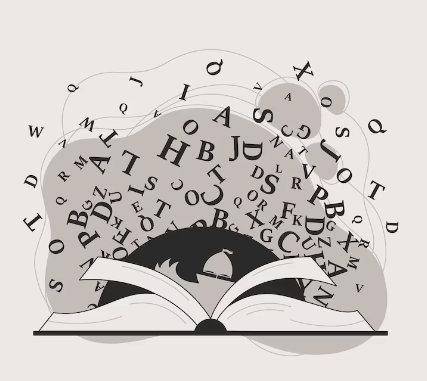
Paraphrasing largely involves the process of synonymizing. The words of the text are usually changed with their synonyms so that the purpose of paraphrasing can be achieved. When this type of change is regularly practiced, it can help you improve your vocabulary.
Regardless of whether you paraphrase yourself or using an online tool (both methods will be discussed), your vocabulary can grow. If you paraphrase manually, then you will find yourself looking for suitable synonyms using thesauri and dictionaries. During this process, you will get exposed to a plethora of new terms and words, all of which you can passively memorize.
Similarly, if you use an online tool for the job, you will be able to look at the different synonyms utilized by the tool to swap the original words. You can likewise memorize these synonyms and grow your word bank.
Let us explain this with an example. We have taken a random paragraph and rephrased using an online sentence rephraser. The result we got can be seen in the image below:
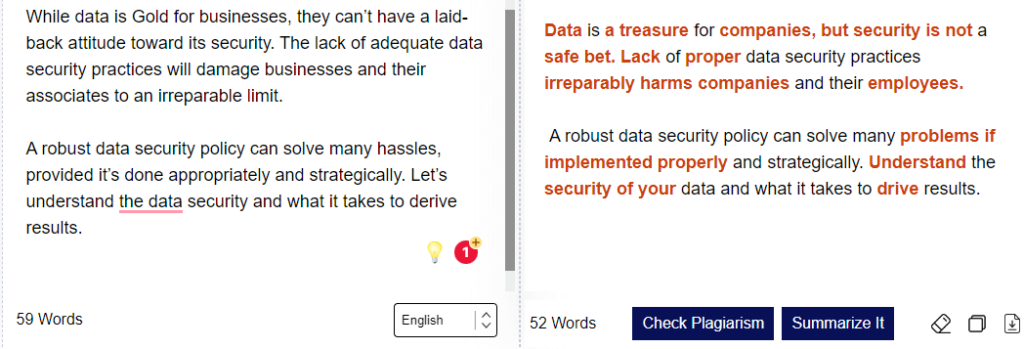
Allows You to Write Faster

When you’re writing an assignment or research paper on a complex topic, then there are chances that you may end up writing incorrectly or irrelevantly due to lack of understanding. This is where paraphrasing helps. Instead of writing inaccurate information, you can simply paraphrase the statements of the source and thereafter cite it (the source).
This will result in saving a lot of your time and also save you from writing inaccurate information in your assignment or research paper.
Let us explain this with an example, We have taken a research paper from Google Scholar:

If someone wanted to use the highlighted line without taking the time to understand it, they could simple rephrase it as follows:
“Many compounds in potatoes lend to their antioxidant properties, and there is growing interest in varieties with colored flesh”.
The advantage of paraphrasing the sentence (highlighted in the image above) is that, we are able to provide the same the information accurately without any risk of plagiarism.
Disadvantages of Academic Writing
Apart from advantages, paraphrasing has a downside as well. However, this downside is only applicable to online paraphrasing tools.
Out-of-context content

When paraphrasing content using a paraphrasing tool, it would be good to always review the output. Sometimes tools can also end up rephrasing the content by completely altering its original meaning. The main reason of this is the poor readability, word choice, and sentence structure of the input content which further causes the tool to not properly understand the context of the input.
For example:
We are going to provide a complex sentence whose context is a bit difficult to understand to the tool, in order to find out how it deals with it. The result we got can be seen in the attached picture below:

As you can see in the image above, the provided output is completely going out of context, although the synonyms are fine. To avoid using content that doesn’t make sense, it is always good to review the rephrased content provided by the tool.
Makes You Rely Completely on Other’s Content
One of the biggest downsides of utilizing paraphrasing is that it makes you to completely rely on someone else’s content. You don’t have your own ideas or thoughts. This stunts your own knowledge growth and academic writing skills.
That’s why it is always recommended to only utilize paraphrasing when the need arises. You should avoid adopting paraphrasing as a regular practice.
Final Words:
In conclusion, paraphrasing is an excellent skill to have in academic writing. It helps students to restate the materials they are studying in a more precise language and different way. The skill of paraphrasing can also help students to become more confident in their writing and create more compelling papers.

How to Network Successfully While Pursuing a Master of Management
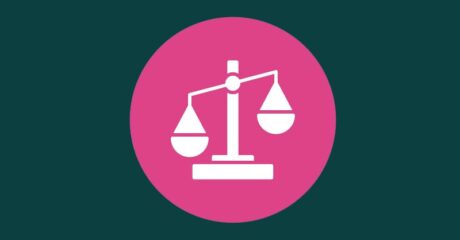
Exploring the Connection Between Integrative Health and Hormonal Balance

How Does Maintaining Employee Devices Boost Performance?

Best Ways to Find Email Addresses For Your Qualified Leads

What Are Commodities and Understanding Their Role in the Stock Market?

The Psychological Benefits of Blogging for Students: A Stress Relief Perspective
- Available Courses
- Career Bundles 91
- Animal care 7
- Quality Licence Scheme Endorsed 111
- Teaching 13
- Teaching & Academics Primary 26
- Accounting & Finance Primary 34
- IT & Software 170
- Healthcare 129
- Marketing 32
- Health and Safety 417
- Construction 51
- Electronics 27
- Hospitality 22
- Health and Social Care 237
- Child Psychology 37
- Management 386
- Business Skills 278
- First Aid 70
- Employability 268
- Safeguarding 76
- Food Hygiene 105
- Personal Development 1374

https://www.trainingexpress.org.uk/wp-content/uploads/2021/07/logo-final-1-1.png
Upgrade to get unlimited access to all courses for only £49.00 per year, get 5 courses, only at £19.99.
Original Course Bundle Price £49.95
No more than 50 active courses at any one time. Membership renews after 12 months. Cancel anytime from your account. Certain courses are not included. Can't be used in conjunction with any other offer.

Paraphrasing: 3 Things You Need to Know (What, How and Why?)
Paraphrasing is an essential writing tool for conveying meaning of core concepts and ideas while avoiding plagiarism. In this article, we’ll cover exactly what paraphrasing is and isn’t, the five step approach for effective paraphrasing and finally, the importance of paraphrasing beyond issues of plagiarism.
.jpg)
What is Paraphrasing?
Paraphrasing is rewording another’s written or spoken words into your own words. This is done by presenting the meaning of the original statement with new words and an altered structure. For example, the above point could be paraphrased to: “Paraphrasing means to share another’s ideas in your own words, keeping the original meaning intact by simply changing the words used or structure involved”. The original point remains, but the wording and sentence structure has changed.
The focus is to convey the meaning of the original idea using your own words. This writing technique is usually used for a short individual passage or idea, and is not to be confused with summarising. A paraphrase will often be similar in length to the original statement, and will focus on the core points of that idea. In contrast, summaries usually involve synthesising a wide range of information to share the core theme, or results of a piece of work.
How to Paraphrase
There’s a five step approach to paraphrasing effectively. First, read the material carefully to extract meaning. It’s important to develop an understanding of the points being made in order to effectively convey this meaning to another. Second, note down the key concepts. What have you understood from the passage? What key points would you like someone else to understand? Third, attempt to paraphrase this information without looking at the original. You can do this using a range of methods:
- Use synonyms to keep some of the original content, without directly using the same words. “Teachers” could be replaced by “Educators”, or “Students” could become “Undergraduates”. This depends on the content, and it’s important to make sure you still convey the core points well.
- Rearrange the content by switching the order of certain phrases or sentences. This might involve switching from an active to a passive voice. Although it's best to use the active voice, this is an ideal way to begin paraphrasing content, giving you a starting point to work on. You can continue editing the first paraphrase to ensure it’s written in a clear and concise way.
- Utilise digital tools to get you started. In genei’s notepad, you can paraphrase your notes with the click of a button, giving you new words to work with. This is ideal because you can easily work with the notes made from your readings, and minimise your workflow to one space.
Fourth, compare your paraphrased version to the original. Check if words, sentences or phrases are too similar and make edits. You can also ensure your paraphrase is effective by noting down the core ideas in your paraphrase. Do these match those originally noted from the source? Finally, be sure to cite the source! You must still acknowledge that you have paraphrased someone else’s ideas.
The Importance of Paraphrasing
Paraphrasing is an important academic skill for avoiding plagiarism . However, this isn’t the only reason paraphrasing can be important. The process of paraphrasing involves actively engaging with the material you want to rework. This can improve your own knowledge of the idea you’re working with, which can be more effective for long term understanding in comparison to simply memorising facts. Likewise, the ability to paraphrase well, is evidence that you understand the content and core ideas involved.
Beyond academia, paraphrasing still proves to be essential. This technique can act as a bridge and communication tool for sharing valuable information with a non-specialist audience. Original sources of information can be hard to digest if you’re not familiar with the subject area, however, sometimes this information still needs to be communicated. Paraphrasing allows you to tailor ideas to a particular audience, making it accessible, while still retaining the core message. For example, being able to convey important business information to a client, would require certain professional documents and plans to be paraphrased for clearer communication.

Do you want to achieve more with your time?
98% of users say genei saves them time and helps them work more productively. Why don’t you join them?
About genei
genei is an AI-powered research tool built to help make the work and research process more efficient. Our studies show genei can help improve reading speeds by up to 70%! Revolutionise your research process.
Articles you may like:

Find out how genei can benefit you
We apologize for any inconvenience as we update our site to a new look.
- Walden University
- Faculty Portal
Evidence-Based Arguments: Paraphrasing
Basics of paraphrasing.
A successful paraphrase is your own explanation or interpretation of another person's ideas. Paraphrasing in academic writing is an effective way to restate, condense, or clarify another author's ideas while also providing credibility to your own argument or analysis. While successful paraphrasing is essential for strong academic writing, unsuccessful paraphrasing can result in unintentional plagiarism. Look through the paraphrasing strategies below to better understand what counts as an effective paraphrase.
Effective Paraphrasing Strategies
If you’re having trouble paraphrasing a text effectively, try following these steps:
- Reread the original passage you wish to paraphrase, looking up any words you do not recognize, until you think you understand the full meaning of and intention behind the author's words.
- Next, cover or hide the passage. Once the passage is hidden from view, write out the author's idea, in your own words, as if you were explaining it to your instructor or classmates.
Have I accurately addressed the author's ideas in a new way that is unique to my writing style and scholarly voice? Have I tried to replicate the author's idea or have I simply changed words around in his/her original sentence(s)?
- Last, include a citation, which should contain the author's name, the year, and the page or paragraph number (if available), directly following your paraphrase.
Examples of Paraphrasing
Here is the original source an author might use in a paper:
Differentiation as an instructional approach promotes a balance between a student's style and a student's ability. Differentiated instruction provides the student with options for processing and internalizing the content, and for constructing new learning in order to progress academically.
Here is an example of bad paraphrasing of the source. Even though the student is citing correctly, underlined words are simply synonyms of words used in the original source. You can also see how the sentence structure is the same for both the original source and this paraphrase.
Differentiation is a way to encourage equality between the approach and talent of the student (Thompson, 2009). This type of instruction gives students different ways to deal with and grasp information , and for establishing new learning to move on in education (Thompson, 2009).
Here is an example of a better way to paraphrase the source. In this example, the author has taken the essential ideas and information from the original source, but has worded it in her own way, using unique word choice and sentence structure. The author has condensed Thompson's (2009) information, including what is relevant to her paper, but leaving out extra details that she does not needed.
Teachers use differentiated instruction to help students learn, allowing the teacher to cater lessons to the way each student learns and each student's skill (Thompson, 2009).
- Previous Page: Evidence-Based Arguments
- Next Page: Quoting
- Office of Student Disability Services
Walden Resources
Departments.
- Academic Residencies
- Academic Skills
- Career Planning and Development
- Customer Care Team
- Field Experience
- Military Services
- Student Success Advising
- Writing Skills
Centers and Offices
- Center for Social Change
- Office of Academic Support and Instructional Services
- Office of Degree Acceleration
- Office of Research and Doctoral Services
- Office of Student Affairs
Student Resources
- Doctoral Writing Assessment
- Form & Style Review
- Quick Answers
- ScholarWorks
- SKIL Courses and Workshops
- Walden Bookstore
- Walden Catalog & Student Handbook
- Student Safety/Title IX
- Legal & Consumer Information
- Website Terms and Conditions
- Cookie Policy
- Accessibility
- Accreditation
- State Authorization
- Net Price Calculator
- Contact Walden
Walden University is a member of Adtalem Global Education, Inc. www.adtalem.com Walden University is certified to operate by SCHEV © 2024 Walden University LLC. All rights reserved.
- Our Mission
Teaching Students to Paraphrase
Ideas for scaffolding paraphrasing so that students correctly learn this valuable but difficult-to-master skill.

When discussing text in the classroom, it’s tough for students to shift from utilizing an author’s words (copying) to accepting the challenge to express that author’s idea in their own words (paraphrasing).
But teaching effective paraphrasing is necessary because the use of paraphrasing facilitates important literacy skills : It encourages repeated reading, develops note-taking habits as students track quotes and outline text details, and expands vocabulary as they consider appropriate ways to describe the original text. The skill may seem daunting to students because it takes time to find the appropriate words to reshape a sentence, but that is time well spent.
We also need to teach paraphrasing, of course, so that students develop the skill set required to avoid committing plagiarism unintentionally .
Student Tools
One way to support students is to make them aware of tools that may help when they’re paraphrasing. Think of these as training wheels—students won’t use them forever.
Academic Phrasebank : Ready-made phrases help students organize their sentences when they paraphrase. The site provides sentence starters for defining ideas, comparing and contrasting ideas, describing cause and effect, and explaining evidence to support statements.
For instance, if a student were paraphrasing vocabulary word X, they would be able to find sentence starters such as “The word X encompasses...,” “The word X is challenging to define because...,” and “The word X is intended to....”
Ashford University Writing Center : This website has a five-item quiz to review the paraphrasing process. It allows students to identify examples and non-examples of paraphrasing for a given text.
When examining non-examples, students are shown how replacing or rearranging words is akin to copying and pasting on a computer. Students see examples of effective paraphrasing, including a change of sentence structure or personal elaboration combined with limited quoted information.
Tone Analyzer : This tool allows students to enter a brief sample from a text and receive an analysis of the tone. When using this tool, students can request an assessment of whether the text illustrates anger, joy, sadness, etc. In addition to these emotions, the website includes language descriptors such as confident (used to describe texts that use active voice and/or words such as will , must , etc.) or tentative (texts with words such as seems , appears , might , etc.). This tool is useful in helping students successfully align the tone of their paraphrased material with the tone of the original text.
Student Self-Check Prompts
Students should outgrow the tools above, and teachers can encourage that growth by showing them how to monitor their own progress with paraphrasing. Students can self-check to determine how on track with paraphrasing they are by asking themselves these questions:
- Can I identify elements of the text that are most significant (and thus appropriate to preserve) when I put it in my own words?
- Can I recite elements of the text from memory in order to prepare to put it into my own words?
- How can I adjust the sentence structure to preserve the meaning of the text?
Student Cautions
Because the journey to paraphrasing may involve a few hiccups, it’s a good idea to identify potential student challenges. When paraphrasing, remind students that they should:
- Attempt to describe the text in their own words gradually, one component at a time (thanks to Doug Lemov and Maggie Johnson for this close reading strategy). For instance, they might first use their own words to describe significant phrases in the reading, and then make an effort to explain one or two key sentences, and finally attempt to paraphrase an entire paragraph.
- Monitor the similarities between the text and the paraphrase. For instance, after describing specific sentences or paragraphs, they should note how many words are shared. Instead of using the same words as the author, focus on mirroring the same main idea. The Poorvu Center for Teaching and Learning at Yale offers easy-to-follow models for how to achieve this.
- Ensure that there is a sufficient number of word substitutions in the paraphrased material. (Substituting only a couple of words could constitute plagiarism.) Students should focus on changing the structure of the sentence . This may involve converting a simple sentence to a compound sentence or adding a prepositional phrase.
- Avoid adjusting special language (acronyms, figurative language, jargon, etc.). These kinds of terms are considered common knowledge, so using them in a paraphrase doesn’t constitute plagiarism. Resources such as the Purdue Online Writing Lab can help students figure out whether a particular term is common knowledge.
Teachers can push students to move beyond copying by encouraging them to see paraphrasing as the go-to reading response. When we equip students with needed resources, we make student voice the rule instead of the exception.
Ivana Vidakovic
Nov 19, 2022
9 Benefits Of Paraphrasing Tools: Brainstorm, Rewrite, And Talk It Out
Check out the benefits of using paraphrasing techniques with the assistance of AI-powered tools and how they can simplify your writing process.

TABLE OF CONTENTS
Have you ever struggled to brainstorm your ideas on paper?
Overthinking your content can take a lot of work. Besides, ideas, in whatever form they take, are without flaws. Putting them on paper is another story.
We've all been there. One of two things can happen here - either the sentences aren't interesting enough, or the order of the words needs to be switched around to make the writing more coherent.
In this situation, the use of paraphrasing techniques can be beneficial. However, manual writing, which includes manual paraphrasing, can be tedious and time-consuming.
Don’t worry.
In today’s article, we’ll explore the benefits of using paraphrasing techniques with the assistance of AI-powered tools such as TextCortex.
Let's begin!
What Are Paraphrasing Tools?
Paraphrasing tools, also known as "rewriting tools," are AI-powered solutions that offer features for various paraphrasing techniques.
Those techniques include rewriting, summarizing, expanding, and changing the tone of voice, to make your content more engaging, and easier to consume.
Some of those tools(such as TextCortex), can provide even more advanced paraphrasing features that combine AI-writing and rewriting of your content.
In simple words, paraphrasing tools are pieces of software that help you tweak your text while keeping the meaning of the original idea intact.
Now, let's find out the real benefits of including paraphrasing tools in the writing flow.
9 Proven Benefits of Paraphrasing in TextCortex Add-On Example
The benefits of paraphrasing are consistent, regardless of the AI tool you use in your writing process.
Further on, we'll use examples of TextCortex features and their benefits to effectively convey our points.
Let's dive in!
1. Paraphrasing Tools Are Easy To Use
The #1 benefit of utilizing paraphrasing tools lies in their ease-of-use . Neither their use nor the benefits of their features require you to be a technical whiz.
It won't take you long to get these tools up and running. In addition, most of these rewriting solutions have a clean and intuitive interface and are also compatible with many other web-based applications .
For instance, to use the TextCortex rewriter add-on, all you need to do is download its Chrome extension.
By doing this, you'll be able to utilize its software on 30+ different web platforms , including Google Docs, LinkedIn, Facebook, Hemingway, Twitter, Gmail, and many more.
2. Boost Your Productivity
Basic paraphrasing functions exist in all paraphrasing tools, allowing you to make various adjustments to your text. You can rewrite it, extend it, condense it, or change the tone.
By utilizing these features, you'll be able to brainstorm your ideas much faster.
What's more, you'll be able to focus more on the impact of the message you're trying to convey without worrying about the accuracy or structure of the words in your sentence .
For instance, TextCortex, offers advanced features for paraphrasing that include:
- Rewriting feature - rephrase and reword the original sentences.
- Expanding feature - rewrite and extend your original sentences for better context.
- Summarizing feature - get a brief version of long pieces of text.
- Autocomplete feature - form sentences and paragraphs from few-word ideas.
- Tone feature - adjust the narrative tone to fit its purpose.
- Translate feature - rewrite your content in 10+ languages.
- Bullet to email feature - form ready-to-sent emails from bulleted concept.
- Long-form post feature - generate blog posts from 5-word-ideas.
Your output will increase once you possess this set of skills and learn how to use them across various digital platforms.
3. Encourage the Set of Original Ideas
A case of writer's block is the last thing you need on your plate when a strict deadline is hanging on your neck.
If you're having trouble organizing and shaping your thoughts, a paraphrasing tool can be an invaluable resource.
They will enable you to think outside the box and develop fresh viewpoints for you.
The " Autocomplete " function within the TextCortex add-on, for instance, helps you generate complete sentences and paragraphs from a small set of keywords .
As you can see, with just a little effort, you can have a complete paragraph, even with ideas listed as bullet points.
The " Long-form post " feature is similar to " Autocomplete " in that it will generate ideas for a longer piece of writing based on as few as five-word-idea .
You can also control the output length by simply clicking on the output text length at the bottom of the window suggestion (S-100 words, M-200 words, L-300 words).
The true benefit of tools such as TextCortex is that you don't have to switch between tabs to get your work done and that you can simultaneously use more features at once.
When your creative juices are starting to dry up, a paraphrasing tool can be an excellent way to get things moving again.
4. Improve the Quality of Writing
You may not realize how much tone, diction, and writing style matter. And don't get discouraged just yet, because sometimes even highly skilled writers occasionally sound stilted and verbose.
If you want to "spice up" your content, paraphrasing tools allow you to alter the output of some features according to your needs .
For example, you can decide whether you want to sound confident, formal, persuasive, or even sarcastic. You can also choose how simple or complex your sentences need to be .
The TextCortex add-on offers such a feature — the " Tone " feature allows you to choose between 10+ different tones of voice.
Simply select the sentence or paragraph you need to adjust and click on the logo. Once you choose the “ Tone ” option, click on a default tone to switch between various tone options .
In less than a minute, you can rewrite the same topic in a way that is understandable to both newbies and experts on the subject.
5. Enhance Readability And Clarity of Content
Writers frequently use excessive vocabulary to make an impression. In fact, this is most likely the cause why many readers decide rather to scan than read such content.
By providing you with feedback on the readability score, paraphrasing tools allow you to streamline your writing.
The content you create can be simplified while retaining its readers' interest if you comply with these principles.
By making your content simple to digest in this way, you increase the likelihood that your readers will actually read your text.
TextCortex not only has a built-in readability tracker but also automatically rewrites your text to be clearer, more accurate, and easier to read.
Time is a necessity when creating high-quality content. And more than often it's not common to have instant success.
However, with the assistance of paraphrasing tools you can create compelling content at all times.
Moreover, you can tweak your text as much as it is necessary to reach the desirable goal — to keep readers follow through .
6. Get A Professional Proofreading Assets
Editing and proofreading are crucial stages in the creation of any written work. And despite careful manual reviewing, a minor mistake still manages to sneak through.
In most cases, you will find out about this after the article has been published which is frustrating over the roof.
Many paraphrasing tools have built-in grammar checkers that will catch and correct any spelling, syntax, or grammar mistakes.
The real benefit of this feature is that you can track proofreading suggestions in real-time because the process is handled automatically.
7. Write In Multiple Languages
Multilingual assistance is a huge asset if you speak more than one language.
Many modern paraphrasing tools include translation in multiple languages because writers consider this to be a top-notch advantage.
Thus, TextCortex also offers such an ability within the “ Translation ” feature.
You can use it to translate your content in 10+ languages such as German, French, Dutch, Brazilian, Romanian, Ukrainian and more.
8. Lower Chances Of Plagiarism
Search engines can penalize you severely for plagiarism, affecting your credibility and rankings. Not to mention the law sues copyright infringements.
The rewriting process dramatically reduces the risk of plagiarism.
Many tools offer side-by-side where you can compare your output with the original text. After that, you can make additional changes.
Furthermore, you should remember that automated paraphrasing is not always accurate. So, citing your sources is a way to go if you want to stay on the safe side.
9. Reduce Writing Time By 80%
And the last, but not least — paraphrasing tools are, above all, budget-friendly and efficient.
The software can effortlessly transform your content into an entirely new version in under a minute. And what’s more, you don’t have to spend a fortune on it.
The paraphrasing tools can reduce your writing time by 80%, buying you more time to focus on more aspects in which you can improve your content.
Furthermore, many writers produce different versions of their original text. This facilitates the speedy selection of the best-suited version for the target audience.

Wrapping Up
If you're looking to improve your writing skills and produce better content, paraphrasing tools can be a big help. By rewriting text in your own words, you can get new viewpoints about the ideas you are trying to convey.
This can lead to greater clarity and conciseness in your writing. Additionally, using paraphrasing tools can help you spot errors and inconsistencies in your thinking, allowing you to correct them before they cause problems in your writing.
And why not use TextCortex as a starting point to nail down your writing abilities?
By utilizing TextCortex into your workflow, you’ll be able to:
- Leverage both manual and AI-writing in your workflow.
- Reduce your writing time by 80%.
- Produce content at scale.
- Boost your writing skills.
- Generate templates for future use.
- Write content according to your needs on 30+ online platforms
- Access AI writers that can generate any content type in 72+ languages .
- And a lot more.
Download TextCortex add-on today to experience an exciting and entertaining side of writing.
Reimagine the way you interact with AI.
Harness knowledge with an AI of your own, define behaviour and integrate your favorite tech stack on over 30,000 platforms.
Did you like this article? Explore a few more related posts.

12 UX Writing Best Practices You Should Know

7 Best Practices for Writing Policies and Procedures

9 Best Practices for Writing User Stories
Questions answers..
TextCortex is a powerful AI-powered writing tool that can help you reduce your writing time, handle big tasks, and create high-quality content without errors. With its customizable platform, personalized intelligence experience, advanced writing and research capabilities, and error-free content, TextCortex is the perfect tool for creative professionals who want to be a creative force in their industry.
Our AI copilot learned how to write from more than 3 billion sentences and has the ability to create unique content. However, fact-checking is something which still requires a human approval.
TextCortex supports more than 25 languages including English, Dutch, German, Ukranian, Romanian, Spanish, Portuguese, French, Italian.
Yes, TextCortex is completely free to use with all of its features. When you sign up, you receive 100 free creations. Then you will receive 20 recurring creations every day on the free plan.
Yes, we have a Text Generation API, please talk to us directly to implement it. You can reach out to us at [email protected]
Account sharing is not allowed. If you have a need for more than 5 seats for an account, you can directly contact us at [email protected]
Yes, TextCortex offers 14-day free trial for users to try out all features extensively with higher number of generations. But keep in mind that you can already try everything with the free plan. There is no feature that is locked behind a premium plan.
Overall, TextCortex AI has over 1000 five-star reviews on reputable review sites such as G2, Trustpilot and Capterra.
TextCortex learns and adapts to your unique writing style and knowledge, making it easier for you to write high-quality & personalized content.
Your premium features will be available until the end of your subscription date, then your account plan will be set to Free plan.
General Questions
Your ai copilot is ready to collaborate with you..
Connect your knowledge, customize the style and start collaborating with your AI copilot.
8 Unique Advantages of Paraphrasing Tools
Have you ever found yourself frustrated trying to find the right words to express your thoughts clearly and effectively on paper? This is where the unique advantages of paraphrasing tools might just help you.
Writing is hard work. And writing well is even harder. It’s a creative skill that requires patience, passion, and practice.
But what if there was a way to cut out all the wasted time and still make sure that your message comes through clear and compelling?
That’s exactly what paraphrasing is for — to convey your message differently while still retaining the core meaning. And paraphrasing tools make this task seamless and automatic.
What is a paraphrasing tool?
A paraphrasing tool (or rewriter) is an online application that rephrases text while retaining the same meaning as the original.
8 Unique Benefits of Using a Paraphrasing Tool
Time-saver and productivity booster.

Time is money, and the right rewriter can help you save on both!
You don’t have to wait for hours to get results from paraphrasing tools. The software can seamlessly transform your content into an entirely new version in less than a minute. All it takes is a click of the mouse.
The result: more time on your hands to create original content.
In addition, several rewriters produce multiple versions of your original text. This allows you to quickly choose the most effective version for your audience.
Spruces up your writing style and quality

Tone, diction, and writing style matter more than you think. Even writers who craft content at a high-level sometimes sound stilted and wordy.
A rewriter can help ‘spice up’ your content. Certain tools even allow you to customize the output as per your needs — you can choose whether you’d like to sound knowledgable, bold, persuasive, or even sarcastic.
Additionally, you can select how complex or simple you’d like your content to be rewritten. You can rephrase the same topic in a language that appeals to novices and experts in less than a minute.
User-friendly

You don’t have to be a tech expert or have any special skills to use the advantages of paraphrasing tools . These tools are easy-to-use and require little effort to get started.
You need to copy-paste your original text in the space provided and click on the ‘rewrite’ or ‘paraphrase’ button. That’s it! The application will do the grunt work for you.
Most online rewriters have simple and straightforward interfaces that make rewriting a breeze. Additionally, many are compatible with all types of computers and smartphones.
Helps get your creative juices flowing

When you’re rushing to finish a project, the last thing you need is the dreaded writer’s block.
A rewriting tool can kickstart the creative process by providing you with unique ways to express your message. You can explore different ideas and come up with new perspectives.
It’s easy to get stuck in a rut while working on a topic — especially for content writers working on back-to-back pieces. We’re all humans, after all. A paraphraser is perfect for reigniting the imagination and getting you back on track when inspiration starts to wane.
Enhances the readability of your content

We often try to impress our audience with flowery language and over-the-top vocabulary. The reality is that they’re more likely to skim over such content than read it.
Paraphrasing tools help simplifies your content so that your website’s visitors feel inclined to stick around and see what you have to say.
It automates the process of rewriting your content to make it more concise, accurate, and easier to read. It helps strip your sentences down to their core meaning to make them more relatable to your target audience.
Quality content takes time to create. You’ll rarely hit the mark right away. But a rewriter can help engagingly phrase your content. It’s like your own personal editor, available to your 24/7.
This allows you to create meaningful content whenever and wherever the need arises.
Proofreader in your pocket

Proofreading and editing play a crucial role in the writing process.
But despite tediously combing through the copy manually, a little typo always seems to slip past. And you only tend to notice this once the article is live.
Your paraphrasing tool can come to the rescue — several have integrated grammar checkers that spot and eliminate spelling, syntax, or grammatical errors. You can quickly ensure that your final draft is free from blunders.
The best part: it’s all done automatically, saving you time and energy.
Multi-language support

Did you know that Chinese is the most widely-spoken language globally (according to the number of native speakers)?
Yes, it’s not English!
So what do you do if your target demographic speaks another language?
Rewriters to the rescue! Many paraphrasing tools offer multi-language support and even translation services powered by artificial intelligence.
Minimizes chances of plagiarism

Plagiarism can incur harsh penalties from search engines, dropping you down in the rankings. Not to mention the astronomical amount you’d have to shell out if taken to court for copyright infringement.
Rewriting reduces the risk of your content being flagged for plagiarism.
Many tools offer a side-by-side view to show how unique your content is from the source material. You can then manually edit the content and make the requisite changes.
Keep in mind: A paraphrasing tool is not always foolproof. Attributing your sources is the best way to stay on the right side of the law.
To summarize…
An online paraphraser is a powerful tool to help you rewrite unique content from the source material in virtually no time. They’re an indispensable resource for writers looking to make their point concisely and convincingly. If you’re on the market for a quality and reliable rewriter, try ContentBot. Paraphrasing both long-form and short-form content are easy with our AI-backed solution.
Check out more on Content and AI!
- Latest Posts
- 7 Inspirational Writing Quotes (And What Writers Can Learn From Them) - September 1, 2022
- 5 Effective Ways For Marketing Your Small Business On A Budget - August 24, 2022
- The Importance of Branding for a Small Business (Plus Tips To Get Started) - August 24, 2022
Leave a Comment Cancel reply
Save my name, email, and website in this browser for the next time I comment.

IMAGES
COMMENTS
Paraphrasing helps you acquire the capacity to evaluate and prioritize information, which is useful in education or professional life. Improves Writing and Research Skills. Encourages Academic Integrity. One of the most obvious benefits of paraphrasing is that it improves your writing and research skills.
By paraphrasing, you can curate credible and well-developed documents, and arguments. But there's more to paraphrasing than the final result, the process of paraphrasing engages your ability to learn actively, write well, and communicate creatively. Amirah Khan. March 22, 2022. Paraphrasing allows you to share another's ideas in your own words.
Benefits of Paraphrasing. There are a few solid benefits to be gained for your learning abilities and writing skills by paraphrasing. These include: Improved Writing Skills. When you paraphrase text, you need to write paragraphs and passages of text in your own words based on your understanding. This helps you bolster your writing skills ...
Example 6. Original: "Regular exercise is crucial for maintaining optimal physical health and preventing various health issues.". Paraphrased: "Exercising regularly is important for keeping your body healthy and avoiding health problems.". In these examples, you can observe the use of different wording, sentence structure, and synonyms ...
Like quoting, paraphrasing has its advantages: It can help you improve word choice and tone. You can paraphrase to use terminology or tone consistent with the rest of your writing. It can allow you to broaden the subject matter. Apply an idea to a new topic through paraphrasing to showcase commonalities between seemingly separate arguments.
Benefits of paraphrasing. Paraphrasing has some benefits that you can reap in aspects of your writing skills and learning abilities. Improves writing skills. Paraphrasing requires you to change the passages in your own words, which may help refurbish your writing skills. Rewriting or paraphrasing is essential in writing essays or research papers.
Conclusion: Paraphrasing is an essential skill for any writer, enabling you to enhance clarity and originality in your writing. By paraphrasing effectively, you make complex concepts more accessible to your readers, express ideas in your own voice, avoid plagiarism, and craft engaging and unique content. Practice and refine your paraphrasing ...
Effective paraphrasing affords you several benefits. In Q&A sessions, for instance, it allows you to: Make sure you understood the question correctly. After your paraphrase, the question asker has the opportunity to correct you or refine his or her question. There is no sense in answering a question you were not asked. Think before you respond.
Paraphrasing is the process of rephrasing or rewording a piece of text, whether it's a sentence, a paragraph, or an entire document, in your own words while retaining the original meaning. The goal is to convey the same message but with a different sentence structure or wording. Essentially, it's like expressing someone else's ideas using ...
Benefits of Paraphrasing. Paraphrasing is a skill often associated with avoiding plagiarism, but its benefits extend far beyond that. Here's why it's important: Improve Writing Skills: Paraphrasing is more than just finding different words; it's about explaining things clearly and briefly in your own words. Doing this regularly helps you ...
One advantage of paraphrasing is that you can choose which information to use and which to leave behind. That means you only need to mention what's relevant to your topic. For example, let's say you're writing a paper on solar panels and want to reference an article about general sustainable energy. You only need to paraphrase the parts ...
Advantages of Paraphrasing in Academic Writing. Below, we have discussed some of the major advantages for students, researchers, and journalists. Avoiding Plagiarism. It can be frustrating for academics when their submitted work comes back with plagiarism in it. It is necessary that all types of academic papers should be 100% unique and ...
One advantage of paraphrasing a paragraph instead of a sentence is that you can sometimes change the order of the sentences. Paragraph structure typically uses a topic sentence (introduction) and a conclusion sentence, but the sentences in the middle can be rearranged except where the order matters, as with step-by-step instructions or logical ...
A paraphrase will often be similar in length to the original statement, and will focus on the core points of that idea. In contrast, summaries usually involve synthesising a wide range of information to share the core theme, or results of a piece of work. How to Paraphrase. There's a five step approach to paraphrasing effectively.
To do this, follow the "Four R's of Paraphrasing": 1. Reword. Ask yourself if any of the words or phrases you used were copied too closely from the original text, and replace anything that is too similar in your paraphrase. It's especially important to do this for longer, less commonly used words. 2.
Paraphrasing is a complex thought process. Paraphrasing requires you to process ideas first before you transform them into your words. Paraphrasing, as a learning strategy, has several advantages. When you rewrite the information in your own words, your brain is engaging in an active thought process. It's like a strategic board game.
Paraphrasing is easier if you follow these tips: 1:38. Identify the exact passage you want to paraphrase. 1:43. Look away from the text when paraphrasing so that you don't repeat the author's words. 1:48. Restate the author's ideas in different words that are equally specific. 1:53.
Advantages of Paraphrasing. Here, you will learn about the advantages of paraphrasing. Your goal is to retain the original meaning with better understanding and methods. Do acknowledge the points ...
Basics of Paraphrasing. A successful paraphrase is your own explanation or interpretation of another person's ideas. Paraphrasing in academic writing is an effective way to restate, condense, or clarify another author's ideas while also providing credibility to your own argument or analysis. While successful paraphrasing is essential for strong ...
But teaching effective paraphrasing is necessary because the use of paraphrasing facilitates important literacy skills: It encourages repeated reading, develops note-taking habits as students track quotes and outline text details, and expands vocabulary as they consider appropriate ways to describe the original text.The skill may seem daunting to students because it takes time to find the ...
The benefits of paraphrasing are consistent, regardless of the AI tool you use in your writing process. Further on, we'll use examples of TextCortex features and their benefits to effectively convey our points. Let's dive in! 1. Paraphrasing Tools Are Easy To Use. The #1 benefit of utilizing paraphrasing tools lies in their ease-of-use. Neither ...
And paraphrasing tools make this task seamless and automatic. What is a paraphrasing tool? A paraphrasing tool (or rewriter) is an online application that rephrases text while retaining the same meaning as the original. 8 Unique Benefits of Using a Paraphrasing Tool Time-saver and productivity booster Photo by Malvestida on Unsplash
AI Paraphrasing Tool. Your words matter, and our paraphrasing tool is designed to ensure you use the right ones. With unlimited Custom modes and 9 predefined modes, Paraphraser lets you rephrase text countless ways. Our product will improve your fluency while also ensuring you have the appropriate vocabulary, tone, and style for any occasion.